#kms over how he's into AI art now
Note
HI ID VERY MUCH LIKE TO HEAR ABOUT YOUR KAYCEE AU,, (also ik we haven't properly talked in a while so hey what's up !!)
HI YES I DO HAVE CONTENT FOR YOU
(also hi!! It has been a while, I'm doing okay!! Wbu? ^^ love your art and content as always!!!! :D your Kaycee design has inspired me a BUNCH it's so cute,, the way you draw her is 10/10 if anyone reading this hasn't seen said design PLEASE go follow Kal and look at it (I reblogged the specific art recently if you can't find it >:) ))
As a quick note, I haven't finished KM and this AU was made before a lot of that so no KM spoilers, at least not intentional ones lol.
(tossing in a readmore as this rant got long)
OKAY SO
This AU is called Inscryption devs because surprise surprise, it follows the development of Inscryption.
In my funky headcanons, there's been two main development teams for Inscryption. The first one had a bigger team who worked on some other GameFuna games, where everyone slowly either quit or met their fate in a... Sadder way. Generally I've always thought of the characters of Inscryption as being poor unfortunate souls rather than simply sentient AU, but both are fun! It's not like they would remember their past anyways. (If you wanna look for sentient AI in my headcanon, ya gotta look to the Hex. Big call-out post for everyone who got me into the Hex, SO worth it.)
But, then Inscryption gets shelved for a couple years. The office is full of rumors and no one is interested in really touching it, GameFuna is just glad to have the code. (tbh I don't fully know what it does, the ARG confuses me LMAO)
Then comes along Kaycee! She's been working there for a while, avid card game fan, and she's well liked for her dedication to the company and work on other games. After finding out about the Inscryption project, she grows incredibly intrigued by it, and convinces the company to give her a second chance with the game. However, she must work with a smaller team, to prove herself for now.
So, gets into the part where I get to be cringe - my original characters. The Inscryption developer team consists of..
Kaycee Hobbes, the project lead, dedicated and hardworking. She's an overworker with the tendancies to stay late and try to get a lot done on her own all at once. Despite her dependence on herself she's an understanding manager who won't let people walk all over her.
Spencer Kragen, the coder, put on this project as punishment. Spencer is the son of one of the higher ups at the company. Not only does he not want to be here, he's activley making it as insufferable as possible. Through the dedication of Kaycee and slowly learning others perspectives, the stuck up rich kid slowly becomes more accepting of those around him, and learns even a bit about himself.
Diana, the main story builder, is a loving mother of two twin girls. She is overall a very kind and loving figure, becoming a mother figure type to the rest of the group. She has to have a lot of her focus away from work, but she works very hard when she is there. However, when something catches her eye, it's unlikely she'll leave without finding all the details...
Last but not least, Akira! They are the main artist, and a nervous wreck. They tend to overwork a lot, desk full of concept doodles for what they could do with the story. When not working it's likely you'll find them bickering with Spencer. Overall, though, Akira is just a kind and dedicated gamer who is trying their best.
So that's the crew! They spend a good period of time developing the game, obviously, but when it comes down to it..
Everyone in this story is dead by the point of the main events of Inscryption.
It's just fun seeing how they got there! And if you think I write a single story without found family, you are so wrong. /Pos
This also leans into a lot of my headcanons if I am prompted to rant more, so get ready to see things such as the woodcarver as the scrybe of beasts, or just how P-03 acts. Plus uh, all of my Hex headcanons shoved in there, somehow.
And of course, this goofy team of devs lead by the amazing Kaycee.
Okay I'll stop rambling in this longass post I'm sorry for this taking so long hope it's interesting byeee
#sam rants#Inscryption#Inscryption devs AU#ask#kalynscopic#GO LOOK AT KAL'S ART#DO IT#NOW#NOT NEGOTIABLE#/pos#frfr Kal is an amazing artist with incredible talent and skill and if youre not already following Kal do so!!#and thank you for prompting me to rant about my bullshit I have so many Kaycee thoughts and I do want to adapt this AU to some of the KM#changes and things ive seen#KM spoilers past this tag#I've seen the one about the angler getting up and going in the cabin and I think that's such a good moment???#I just know there's other names in there somewhere and I don't know how id adapt to that#alsO Kaycee consitering throwing the disk away. god what a moment I need that#Im just really bad at KM to finish playing it within a timely matter lol#I also wanna integrate Hex stuff... Rebecha my beloved#do people even read tags?#The Hex#Inscryption AU
12 notes
·
View notes
Text
DEATH BATTLE Review: Dragonzord vs. Mechagodzilla
Robotic Kaiju fight to see who is the true king of them all!
Power Rangers get a third round to see if they can’t net a win. This is the third 3D battle of the season too.
Oh, preemptively: Some of the screenshots might not be that great-looking. I had to use Photobox to get these on here.
Dragonzord′s Preview.

We all know the Power Rangers. Five teenagers that banded together to fight the evil Rita Repulsa and her army of monsters. Things were going pretty well for them, until Rita hatched a plan. She would create her own Ranger with their own powers and their own zord.

Enter: The Dragonzord. A powerful mech that can go toe-to-toe with the Megazord, and has a large plethora of powers.

The hosts go over these powers and note that despite this large arsenal, the Dragonzord is more of a CQC mech than a long-range one.

The Dragonzord’s pilot is Tommy Oliver. A martial arts expert who was so dedicated to Ranger work, that he wore the tights for a long time, and even mentored other rangers. Fun fact: His actor’s birthday is on the day that the episode airs for Youtube.
Tommy controls and summons the Dragonzord with a dagger that he plays as a flute, which leads into this segment:
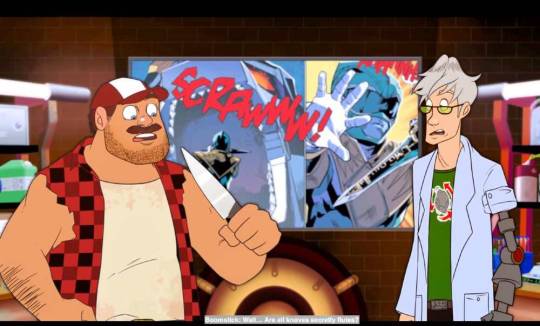


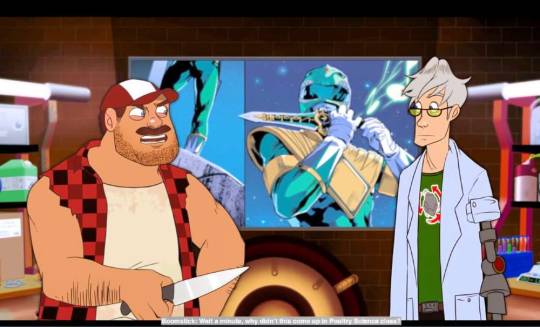
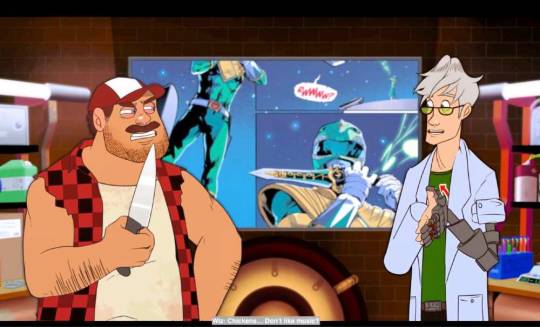


This goes about as well as you’d expect, and…

I just want to say that Boomstick’s expression there is hilarious, and should become a shirt.
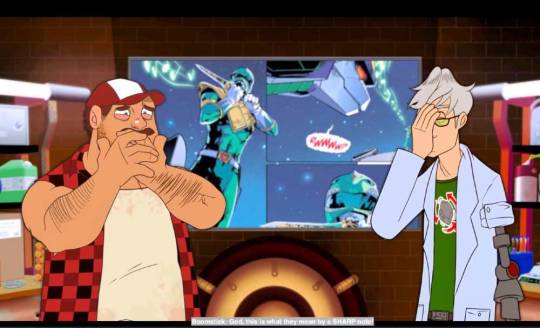
I enjoy this pun unironically.
Anyways, the Dragonzord made short work of Rita’s monsters, and has even fought against the Megazord, which has a power output of over 50k megavolts.
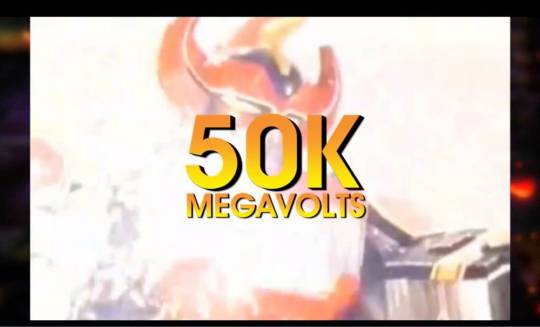
Also worth remembering is that the Megazord once pulled off a feat of 90 Million Newtons


(I don’t know about you, but the whole “As determined in…” parts are really nice callbacks).
So the Dragonzord is in the same ballpark.
Now, the Dragonzord can reach escape velocity. This means that it can move at speeds over Mach 30.

And for the era it was a part of, the Dragonzord is arguably the most durable.


It once survived a blow worth 356.67 Tons of TNT. And shoutout to the guy who made that set piece knowing that it would be destroyed. That’s some quality work.
And what’s a rundown without feats?
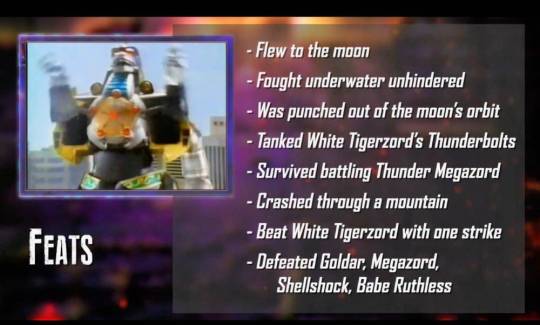
The Dragonzord has defeated the technically superior White Tigerzord, and survived a fight with the Thunder Megazord.
And it certainly stands a chance with it’s own fusion of the Mega Thunderzord… Or Dragonzord Fighting Mode… Or Battle Mode- They establish that he never really settled on a name.
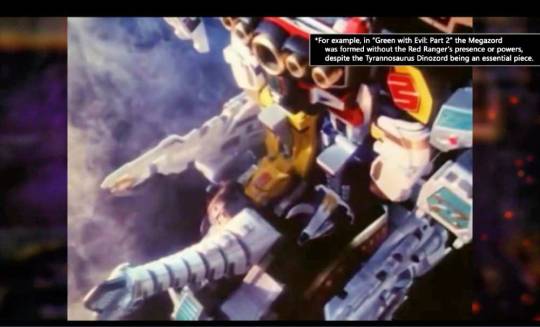

But while Tommy has lost his powers in the past, he has still fought the good fight. Even regaining his powers along the way.
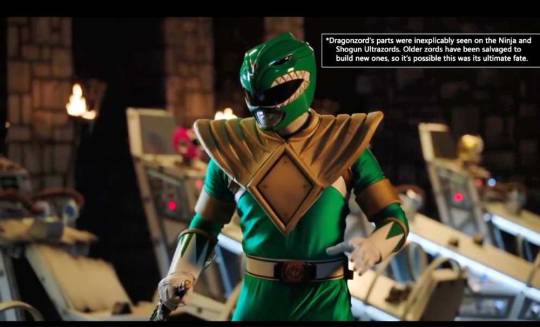
And with the powers returned, perhaps one day, so will the Dragonzord.

Mechagodzilla′s Preview.
We all know Godzilla. The rampaging monster that decimated Japan.

And I’m sure we all know the famous story of how he was defeated. By Dr. Serizawa’s (in)famous Oxygen Destroyer, a weapon so powerful, he destroyed himself with it to prevent it from falling into the wrong hands.

And while Japan was subject to many giant monster attacks over the years, their special task force would handle it neatly… Until a new Godzilla showed up and started wrecking them all over again.
Without the Oxygen Destroyer, the defense squad needed a new way to fight back. So they gathered their top scientists in robotics, microwaves, low-temperature physics, and… Cyber-Necromancy to create their own monster.




Enter: Mechagodzilla.
While it’s not the first one of it’s kind (As Wiz notes), it’s certainly the most unique.
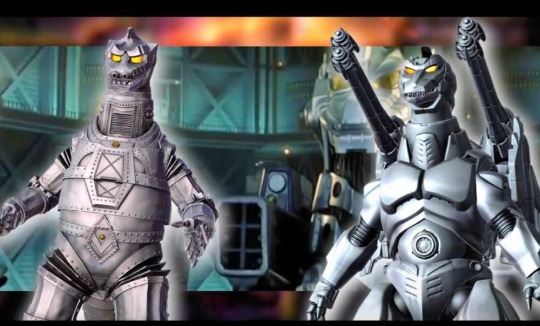
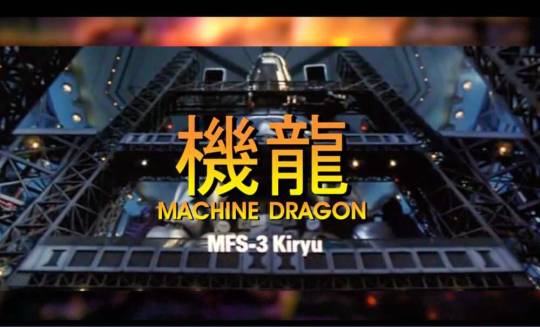
So much so, that it was given it’s own designated codename of Kiryu. A combination of Machine and Dragon. Though, Boomstick opts to just call it Mechagodzilla.
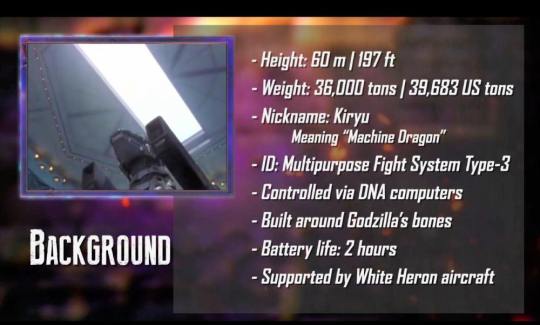
Kiryu is equipped with a wide assortment of weapons. From rockets, to maser cannons, to grappling wires, to spinning claws, a hidden blade, and most famously: The Absolute Zero Cannon. This makes it far better suited to long-range attacks. Making Kiryu a zoner.
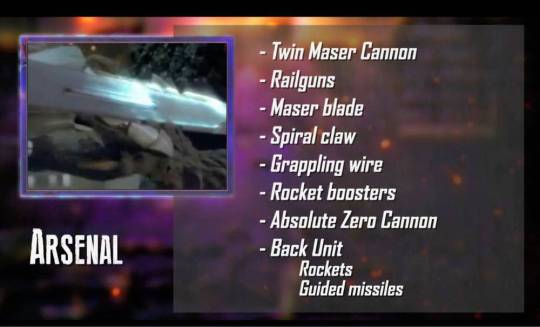
The Absolute Zero Cannon robs it’s target of all of it’s energy at once. Meaning that whatever it hits shatters at the atomic level.


Kiryu is also built around the skeletal remains of the OG Godzilla, giving him all the size and strength as the King of the Monsters. It even uses cyber-DNA to give it an edge up, allowing Kiryu to preform some rudimentary actions like a simple AI. exactly like Wiz’s own Cyber-Goos3 (Spelling citationn: The commentary. There were some difficulties getting the screenshots to work, so time was needed).









(Whether or not this is the same goose from the Terry Board Preview is unknown).
Much like the Dragonzord, Kiryu is piloted by Akane Yashiro. A hardened warrior of the Anti-Megalosaurus Force.

According to the hosts, she’s your typical antisocial anime protagonist. Cutting herself off from other people because she has no family left, and got her squad killed on accident. Because I guess that wasn’t an overused trope back then.
Akane pilots Kiryu from a nearby jet plane. The AC-3 White Heron can fly at a speed of 930 km/hr. Together, these two have a perfect track record against Godzilla.
But, as Boomstick warns, Plot twist: Akane isn’t the only pilot for Kiryu. As it turns out, the original Godzilla is also there in spirit… Literally. Godzilla can wrestle control away from Akane, making it a rampaging monster again.

Though, it’s strongly implied that the two have reached an understanding. Which is a good thing. Because the giant mech has some impressive feats. Like tossing a second Godzilla that clocks in at about 25000 metric tons.
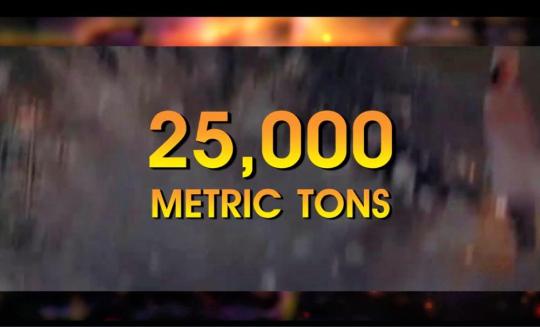

Kiryu was even fast enough to dodge the Atomic Breath, which moves at a speed of Mach 2.5.
Speaking of speed, the mech once flew an extremely large distance in a manner of minutes.
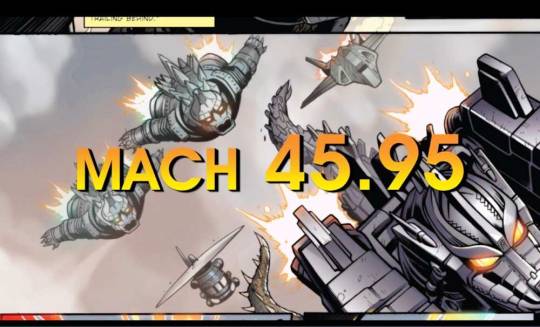
Regardless of who is behind the wheel, Kiryu is a powerhouse. No monster has ever fought a battle against it and lived to tell the tale.


The Battle Itself.
Animator (and some of their previous works), Tommy Oliver will be voiced by Nicholas Andrew Louie and Akane Yashiro will be voiced by Hitomi Farrell. sprite artists, Draconic Robotics by Therewolf. Kristina lead on animation, and Chris Kokkinos on audio.
So the fight is similar to Weiss vs. Mitsuru in the sense that there’s no lead-up to the fight. The fight animation just dumps us in the middle of the battle as it’s going on.
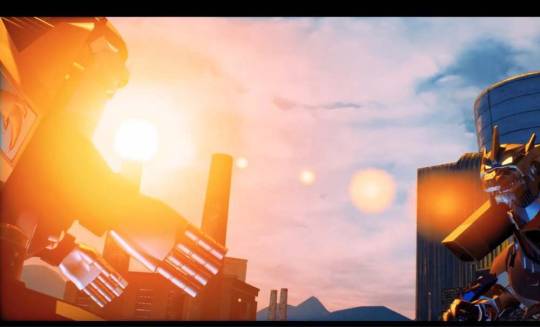
Tommy uses his skills to knock Kiryu down, so Akane gives some motivation.

(For the record, these are subtitles provided by the animation. Not mine).


So Tommy knocks down Kiryu and starts kicking him while he’s down. So Kiryu responds by using that hidden blade from earlier to get Dragonzord off of him.

Akane ensures that all systems are go, and opts to play smart.
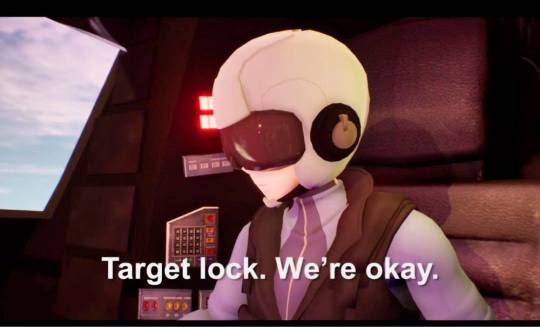

Like, let’s take a moment to appreciate this animation. It’s awesome. This is stuff that they could only dream of doing, and now, it’s a reality.
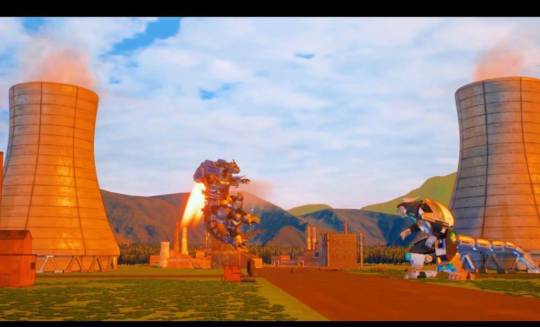
Kiryu gets some distance in, and then goes for a missile barrage. Dragonzord responds by using the head fin to blast them.
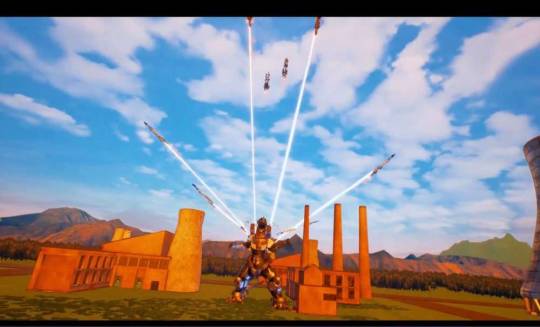
However, the jet booster does manage a hit, and it knocks Tommy down.

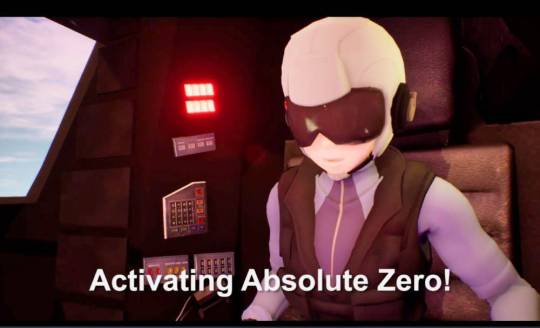
Tommy isn’t going to let some monster blast him with an attack that has a charge though, and retaliates.

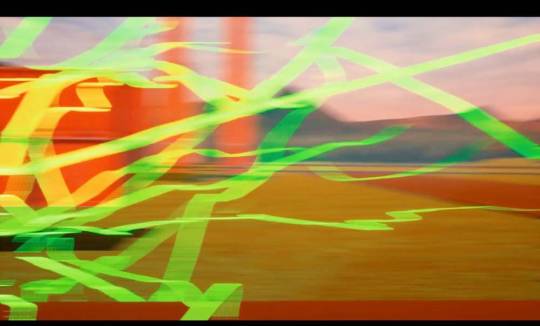
I kinda wish I could make gifsets of these, because they are awesome bits of animation that should be seen to be believed. But, that would take away from the suspense, and I’d rather people go watch the video proper than plagiarize viewership from my review. Plus, I wouldn’t be able to have sound on the gifs anyways. And the music is friggin’ awesome.
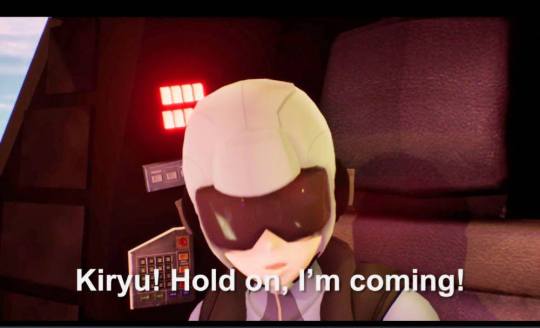
Akane comes in to provide covering fire.
Tommy retaliates by bringing her down.
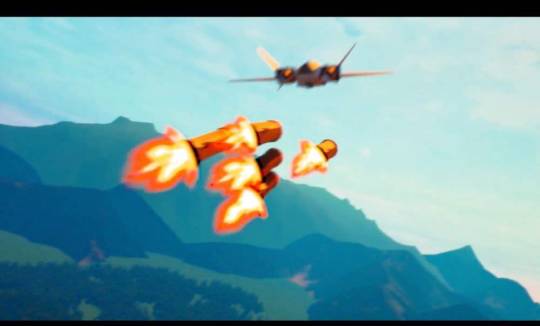

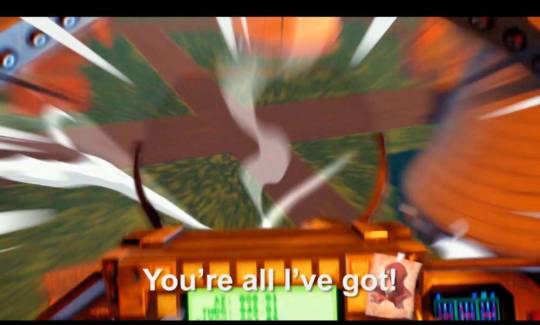
Now, if it weren’t for the fact that Godzilla could take over, Kiryu would be done for. So the battle rages on.
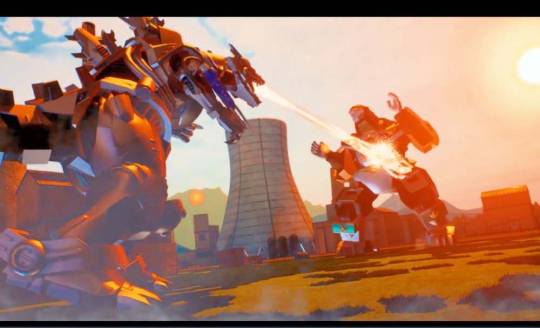

The fight remains close-quarters as both sides make impressive blows and make great counters to one another.
As an example, Mechagodzilla grapples the Dragonzord in his mouth, and starts running and pummeling him.

Can I just say that the Run-and-Pummel is one of my favorite things to see in an action scene? It’s just really cool to see a character carrying their opponent, and either hitting them or ramming them through walls. It’s just so cool.
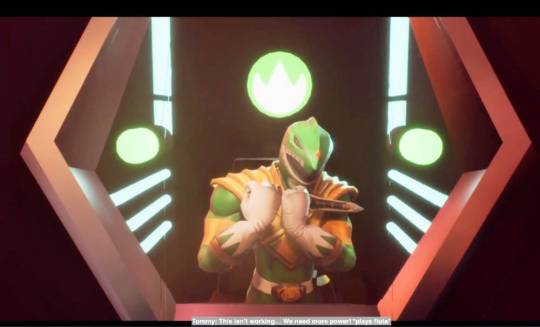
Tommy then pulls the same trick he did (will do?) from Tigerzord vs. Epyon, and calls the other zords to help him out. If they look familiar, that’s because they’re the same model from Megazord vs. Voltron.

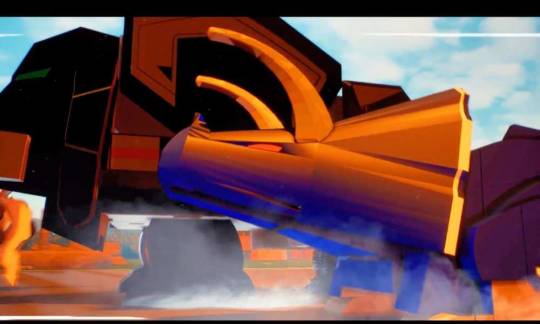

(I won’t be showcasing any screennshots of the combining sequence, because that’s something that must be seen with one’s own eyes).
With Fighting Mode ready, Tommy is ready for round two.
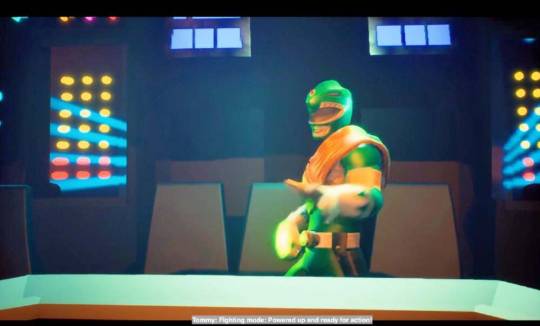

The two do battle, and go at each other. It’s a very close bout, and even over time, it’s hard to tell who has the advantage. Though, given that it’s close-quarters, the Dragonzord has an edge up.
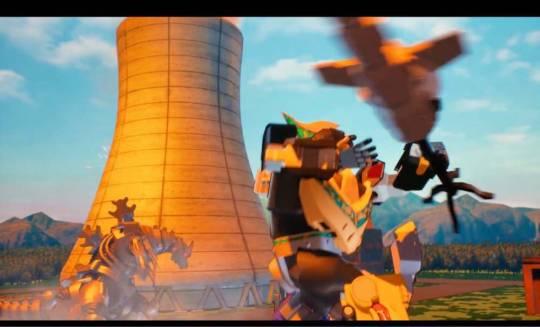

Tommy gets ready for his own finishing blow, so… y’know.
Finishing blow in
5…
4…
3…
2…
1…

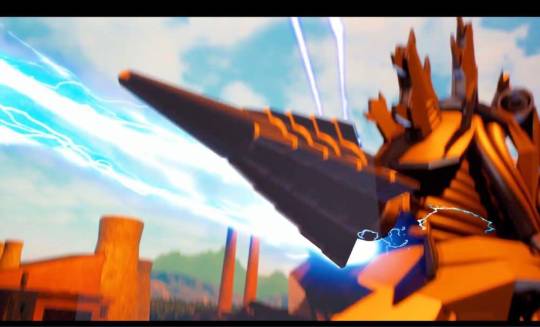

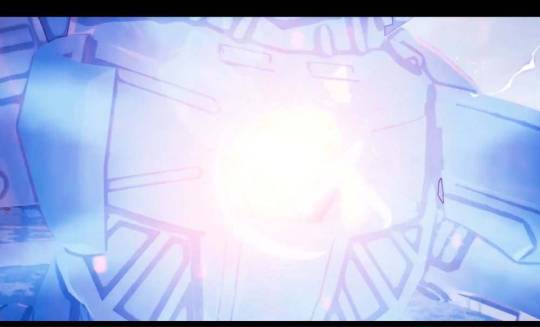
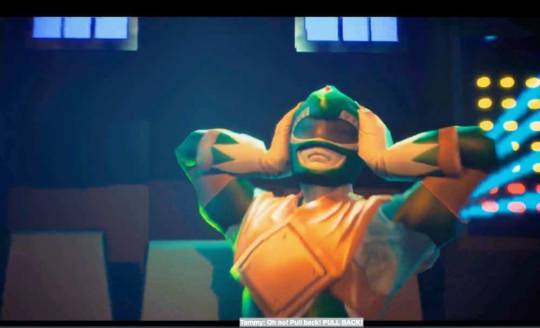

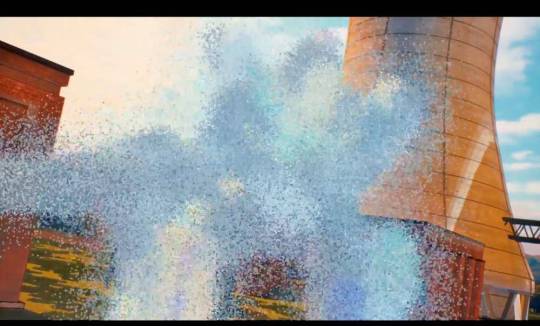
Verdict + Explanation.

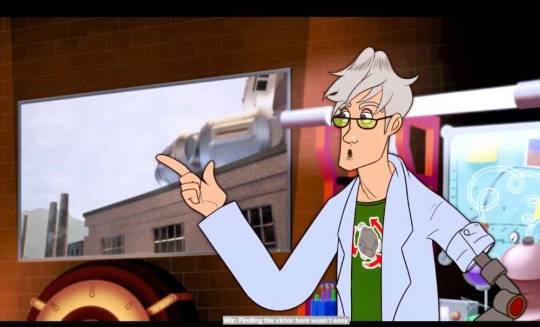

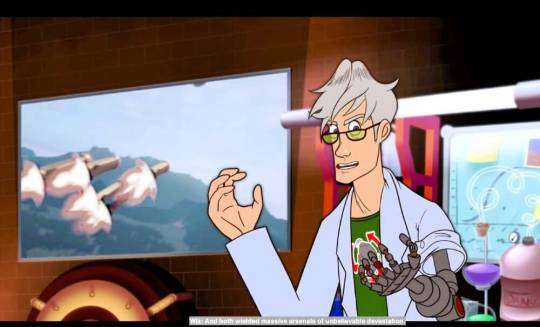
So, right off the bat, Tommy had the experience advantage in the bag. Given how long he’s been at the job, that was a given. But experience wasn’t enough to win the day.
In comparison, Kiryu held the advantage in weight, and had more impressive strength.
Take the best feats that both have shown, well, scaled to in Dragonzord’s case.
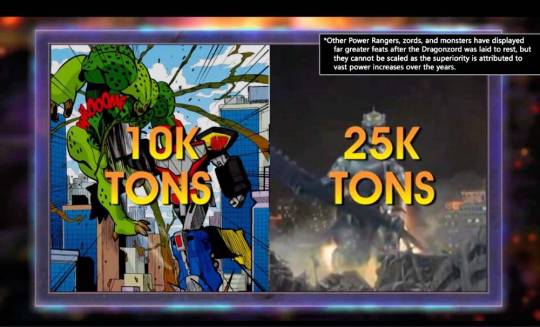
In direct comparison, the Megazord’s best strength feat isn’t even half as good as Kiryu’s best feat. Meaning that Dragonzord’s best feat is also not as good. It also doesn’t help that Kiryu was also good at fighting at a distance thanks to the wider arsenal of tools he had at his disposal.
They go on to explain that while it’s hard to find the Fighting Mode’s largest output, it’s in the ballpark of the Thunder Megazord and Rita, the latter of whom destroyed an island.
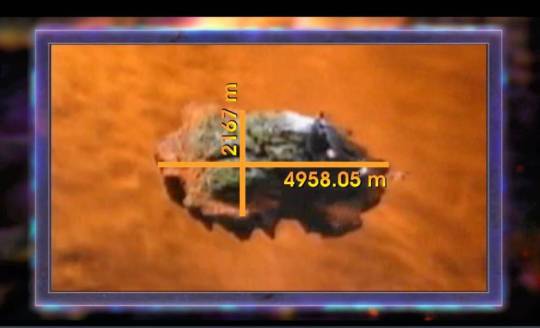

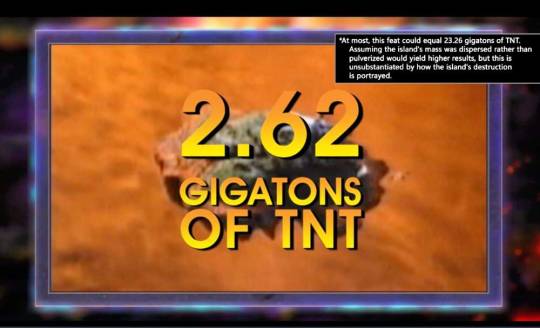
By the size of it, it clocks in at about 2.62 Gigatons of TNT. But still not as good as Kiryu’s best feats.
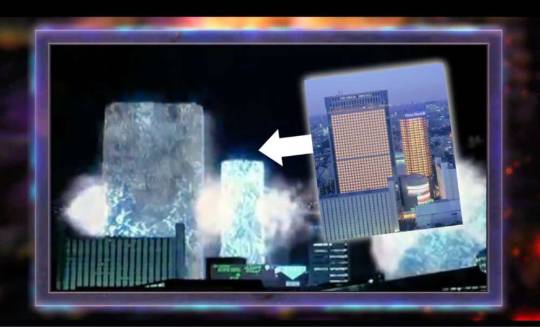

The Absolute Zero Cannon destroyed the Prince Hotel New Tower building, as well as a few others surrounding it. Using the real-life measurements of the building, this means that the Absolute Zero Cannon’s power output is nearly 130 Teratons of TNT. And since Kiryu was at the center of a blast like that, it’s pretty obvious that he has the durability over Dragonzord.
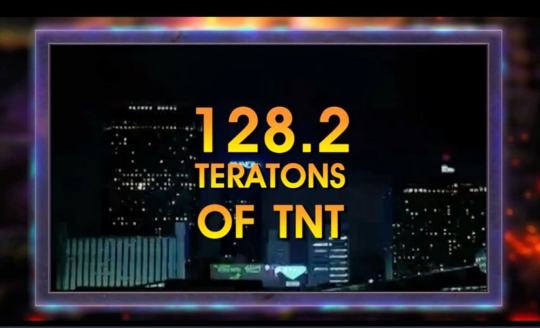

Which is thousands of times greater than anything that the Dragonzord could potentially do.
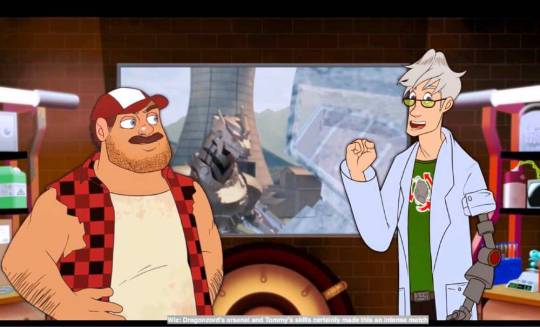


Overall impression.
Like I said, the animation and music is friggin’ awesome. And it’s also a nice relief seeing another movie character enter the fight, since we don’t get too much of that these days.
The explanation makes sense too, aside from the Absolute Zero thing, because it feels more like they should have found the amount of energy robbed instead. It’s probably around the same thing, but still.
The jokes are pretty spot-on, and the animated segments between Wiz and Boomstick are pretty funny too.
It took a few years to see it, but it’s well worth the wait if this is the result of having to wait on seeing this matchup.
9.0/10
Next Time…
(Screenshot of the upcoming battle).

… I have no idea as to why these two are fighting.
Is there a fight that you want me to review? - Send an ask/request, and I’ll look into it!
Do you want to read my fanfic based around DEATH BATTLE itself? click here!
Thank you for reading, and I hope to see you next time for…
Some demon shits.
7 notes
·
View notes
Text
Messaging Extra-Terrestrial Intelligence (METI) – A Local Search
Abstract: This paper examines the feasibility of an amateur approach to METI using cheaply available lasers and optics. We suggest a novel variation in the search methodology, concentrating on contacting any interstellar extraterrestrial probes that may be present in the solar system. Specifically, the Lunar poles and Lagrange points L4 and L5. It is assumed that such a probe incorporates advanced artificial intelligence (AI) at or beyond human level. Additionally, that it is able to communicate in all major languages and common communications protocols. The paper is written in non-technical language with sufficient information to act as a “how to” source for technically knowledgeable people.
Note: Any portion of this may be reproduced and used in any manner provided attributions “Dirk Bruere” and the
organization “Zero State” are included. Other more technical versions of this are available.
[ DOWNLOAD PDF ]
Historical Introduction
On 16 November 1974 The radio telescope at Arecibo sent a brief
message to the M13 star cluster some 25,000 light years distant. It
comprised some 210 bytes of data sent at a bitrate of 10 bits per
second and a power of around one megawatt. The (colored) pictorial
representation is shown here. It is probably the best known attempt at
contacting extraterrestrial intelligence (ETI), even though it was not
serious, was not the first and by no means the last.
The first was a Morse code message sent from the USSR to Venus in
1962 which was even shorter. It is known in Russian as the Radio
Message “MIR, LENIN, SSSR”.
Latterly, in 2016 on 10 October 2016, at 20:00 UTC the Cebreros
(DSA2) deep-space tracking station of the European Space Agency
sent a radio signal towards Polaris, the Pole Star, which is
approximately 434 light years from Earth. The message consisted of a
single 27,653,733 byte, 866 second transmission. Again, it was not a
serious contact attempt, and was rather more a work of performance
art by Paul Quast.
A few, more serious, attempts have been made in the intervening
years i, targeted at more plausible planetary systems but none for any
sustained period of time.
So, enter METI ii or “Messaging Extra-Terrestrial Intelligence” who aim to start a serious
and comprehensive program of signaling various star systems some time in 2018 if they
can raise the estimated $1million per year needed to run the program. For once, judging
by their website, they intend to do it properly with a great deal of effort going into the
communications protocols of the messages themselves.
Laser Communication
And that is where we were until June 2017 and a paper iii written by Michael Hippke
examining the possible role of using the gravitational lensing effect of our sun to amplify
laser signals across interstellar distances. The surprising conclusion was that using optical
wavelength lasers and mirrors of only one-meter diameter, data could potentially be
transferred at a megabit per second rates using around one Watt of power over 4 light years.
This, to put it mildly, is spectacular especially since the receiving technology is potentially
within our ability, assuming we could locate a telescope some 600 astronomical units (AU)
from the sun. Unfortunately, our most distant spacecraft is Voyager 1 at about 140AU. He
also showed in a previous paper that the data rate drops to bits per second per watt using
a 39-meter receiving telescope and no lensing.
However, if we turn that around and assume that ETI has superior technology to us and
can implement suitable receivers, then to contact them we need only very modest laser
transmitters. Ones that are well within the budget of hobbyists and amateur astronomers.
The advantage of using lasers is more apparent, especially for amateurs, when we
consider beam divergence. Lasers can quite easily achieve divergences of less than one
milli-radian (mrad) which corresponds to one meter per kilometer. To achieve that with
microwaves at (say) 6GHz would necessitate a transmitter dish of approximately 65
meters diameter. A very expensive piece of radio astronomy kit. This also means that
power levels can be significantly less than would be needed for radio communication.
Nevertheless, there are serious caveats. These mostly concern the location and type of
transmitter. For example, to limit beam spread Hippke assumes a one-meter diameter
mirror and a beam spread of considerably less than a milliradian, so we are going to
assume a rather larger receiver at the ETI end in order to minimize beam requirements at
our end.
A much more serious problem is that the mirrors have to be aligned with each other.
Specifically, the transmitter should be relatively stationary in space, and not on a rotating
planet which is in turn circling its sun. If the latter is the case, the receiver will probably
only align at fixed intervals lasting no more than a few tens of milliseconds unless very
precise aiming technology is used.
However, there is a more interesting search regime far better suited to low budget than
attempting interstellar communications.
Exploratory Scenario
This is a METI search that will be primarily focused on contact with self-replicating Von
Neumann (VN) style interstellar probes iv. There are strong arguments that over a time scale
of the order of thousands to a few million years, these are the best way of exploring the
galaxy by any intelligent technology-oriented species. Once one of these devices arrives in
a solar system it sets about creating sufficient infrastructure to both report back to its home
system (as well as possible siblings) and create a replica of itself for onward launch to
multiple other stars. Reasonably conservative capabilities are as follows:
They are very likely to outlive the species that sent them
They would almost certainly embody an artificial intelligence (AI) at or beyond
Human level capability
They would be self-repairing and possibly have a lifetime in the tens of millions of
years, barring accidents
They could exist around just about every star in the galaxy within ten million years
Using the kind of technology we might reasonably expect to appear sometime in the next
century or two, such as placing observatories at the gravitational focal point of our sun,
some 600AU out, we could view details on nearby extra-solar planets. And anyone out
there could do the same to us. As a consequence, Earth has likely been an interesting
place to view for the past 300 million years or so with its oxygen atmosphere and
vegetation. And vastly more interesting in the past 10,000 years since rectangular shapes
started appearing in the form of cities and fields. Rectangles generally do not occur
naturally. Then in the past 300 years, the atmosphere started to show signs of industrial
pollution followed 200 years later by radio and TV signals, intense radar pulses and the
unmistakable sign of nuclear bombs whose output peaked at around 1% of the total output
power of our sun.
If ETI exists, or has existed, within a few thousand light years there is a strong possibility
that their probes are already here, and have been for a considerable length of time.
This leads to a number of massively simplifying assumptions, again quite reasonable given
the scenario above. These are:
Since we are now searching within our solar system power levels can be vastly
reduced.
Message transit times, in both directions, are no more than a few hours maximum
and possible only seconds.
Any intelligent VN probe that has been examining Earth will have been monitoring
our technological development and radio/TV output. As a consequence, it will almost
certainly understand all the major languages both written and spoken as well as our
communications protocols.
We need to consider beaming our messages at likely locations within our own solar
systems. For example, where would we place intelligent probes to wait out the ages and
watch developments on Earth? Among strong possibilities are the Lunar poles, Lunar
caverns which we now know exist v and the Lagrange points vi associated with Earth’s orbit,
particularly L4 and L5, where position can be held with little expenditure of energy. We
intend to beam laser messages to these points as part of the Zero State program.
But what messages? People have given much thought to creating a communications
system that can be decoded by ETI, as mentioned above with METI. However, we contend
that the answer is simple – we use English, and code in simple ASCII.
What has been lacking from Earth is a specific invitation to communicate or visit. It is this
that forms the core of our project.
How Far Can We Be Seen?
Suppose we want to do the crudest communication system possible – a laser doing Morse
Code. To the unaided Human eye, how far away could we see the beam? This depends on
several factors:
Beam Divergence
Beam power
Wavelength
Eye sensitivity
Taking these in turn…
The power we will assume to be one Watt since this level of power is quite economical,
and the wavelength to be either 532nm or 520nm, the latter being a pure diode output, not
frequency doubled.
It is also the approximate wavelength where the eye peaks in sensitivity, and in our project
is partly chosen for this reason. We could have gone for high power infrared in the tens of
watts, or maybe towards the blue/violent end of the spectrum. However, green is not only
easier and safer to work with, being highly visible, but is quite photogenic. From a safety
point of view you seriously do not want an invisible beam of blinding intensity sweeping
about. That would also be more difficult to aim and focus.
So we have an intensity of approximately one Watt per square meter at a distance of one
kilometer, with the intensity dropping off as the square of the distance. At 2 km we have
0.25W per square meter, and so on.
Finally, what is the maximum sensitivity of the dark adapted Human eye? It appears to be
about 100 photons per secondvii, but for the sake of argument we shall assume a level ten
times lower, or 1000 photons per second in a dark adapted eye whose aperture is 100
square millimeters. That gives us a minimum intensity requirement of 10^7 photons per
square meter per second. With each green photon carrying an energy of approximately
3.5e-19 Joules we get a required power density of 3.5e-12 Watts.
So, how far can our 1W green laser with a divergence of 1 mRad travel before we hit that
value? The answer is a little over 500,000km – further than the Earth-Moon separation. By
the time the beam gets there it will be illuminating a circle some 500km in diameter.
If we are looking back from the Moon via a modest telescope such a beam would appear
as a bright flickering point of monochromatic light. Even a 100mm diameter telescope
would improve visibility by more than 100 times.
If we wish to improve the numbers there are certain things we can do. If we increase the
power, it scales linearly in intensity at a given distance. If we increase the collimation to
(say) 0.5mRad the intensity quadruples, but the illuminated area decreases 75% as the
spot size halves.
Proof of Principle Equipment – Stage 1
The setup described below is an absolute minimum and has been put together simply to
illustrate how easy it can be, and how cheap.
WARNING! – The lasers described should be treated like a loaded firearms with the safety
off. Anyone around it should have eye protection goggles when it is operating or being
worked on. If it sweeps across your eyes it will cause instant permanent blindness. It can
also start fires. These are Class 4viii. You should also assume they will cause eye damage
out to 1km if the beam is not expanded.
The basic equipment list is relatively straightforward – example sources are UK but may
be obtained cheaply elsewhere:
• A computer with a USB interface
• A terminal emulator program such as Realtermix or similar
• A USB to TTL converter cable x
• A battery based stabilized power supply for the laser module
• High power laser module 1 Watt or greater xi
• A telescopic rifle sight (scope)
• A GOTO telescope
• Various Weaver rail fittings and adapters
• A low power sighting laser
• Laser safety goggles
Less straightforward is any metalwork or optical interfacing of the laser module, however,
the use of a scope with integral Weaver rails simplifies things considerably. The scope
needs an attachment to the GOTO telescope, and the rest of the equipment attaches to
the scope.
The next problem is that of holding the telescopic sight on target, which is where a
motorized equatorial mount, or GOTO mount is required. Both will compensate for the
rotation of the Earth and hold on a previously acquired target with accuracy much better
than the assumed mrad (for scale, the diameter of the full moon in the sky is about 9 mrad)
A GOTO telescope is fully computerized and will automatically move to designated targets
either by name or celestial coordinates.
The first step is to securely attach the laser module co-axially to the telescopic sight so
that you can see through the scope where the beam strikes. To do this you need a
deserted area where you can aim the beam at a target some 100 meters distant and
adjust optics and mechanical attachment so that the beam is aligned and parallel to the
cross-hairs.
At this point you can examine the beam quality. With modules such as the above it will not
be around spot. More likely it will be an image of the emission diode structure. Not ideal,
but good enough for now.
The pictures below show the scope, sighting laser and Class 4 laser complete with a DIN
rail that is used to attach all this to the telescope. In this instance, it is mounted on a
camera tripod for alignment work.
Illustration 1: Left Side of the Lasers and Optics
Illustration 2: Right Side of the Lasers and Optics
Illustration 3: Front view of the Lasers and Optics
Proof of Principle Equipment – Stage 2
So, how do we improve upon this? Well, the answer is obvious. Rather than relying on the
beam straight from the laser passing through the supplied focusing lens we use custom
optics to expand and collimate the beam. This at once gives us better control over the
divergence and by expanding the beam makes it somewhat safer by reducing areal power
density.
Next, we add a receiver to the telescope eyepiece.
This consists of a bandpass optical filter centered at the wavelength of the laser
transmitter. Again, this assumes that any VN probe is quite capable of transmitting on the
received wavelength at a power level comparable to, or greater than, our own.
The necessary electronics, including a high sensitivity photodiode, is not prohibitively
expensive.
Final equipment and Message Format
The above describes a minimal setup both from a cost and capability point of view. A more
suitable laser system would be one using a far higher power, and a receiving telescope
with a mirror at least 200mm diameter (8” reflector).
The choice of lasers is wide, but if we limit the choice to minimize atmospheric absorption
and costly optics that leaves visible and near infrared (NIR).
One possibility stands out. That is a Q-switched Nd:YAG laserxii, with around a 200W continuous,
1MW pulsed, output at 1064nm normally used as an industrial cutter. The
output can if necessary be frequency doubled to 532nm green but with loss of power.
This should be able to communicate with its equivalent to a distance beyond the orbit of
Jupiter.
Such systems typically cost under $15k, although the optics, beam guides and alignment
equipment will add significantly to this price. Needless to say, such a beam in free space is
spectacularly dangerous if mishandled.
Additional requirements will include an electric generator or power source in the kilowatt
region, water cooling and a trailer if the equipment has to be moved to an open air site
before use.
All together we intend to budget around $30,000 for the hardware. Location is as yet
undecided, although a strong possibility is Provo, Utah in the USA given its clear skies and
weather. Britain is a poor second in this respect. Plus, we may locate it at the
TransHumanist Housexiii available to Zero State House Adar. However, much depends on
location and local laws.
The message format with Q-switched pulses would be somewhat different from the
existing setup. The coding would be provided by the timing between the pulses, or by the
timing between successive pulse trains. Again, data rate would be low because we are not
attempting to communicate anything complex. Just attract attention.
Zero State seeks collaboration from like-minded engineers and scientists, and sponsorship
for this project, which after initial hardware costs are met should incur very low running
costs.
Ethical Considerations
On 13 February 2015, scientists (including Geoffrey Marcy, Seth Shostak, Frank Drake,
Elon Musk and David Brin) at a convention of the American Association for the
Advancement of Science, discussed Active SETI and whether transmitting a message to
possible intelligent extraterrestrials in the Cosmos was a good idea; one result was a
statement, (which was not signed by Seth Shostak or Frank Drake), that a “worldwide
scientific, political and humanitarian discussion must occur before any message is sent” xiv
.
We believe that this is not, and should not be the case for local METI. We should issue the
invitation to communicate now. It is beyond reasonable doubt that if any ETI capable of
receiving these messages lies within our solar system or a few tens of light years, then
they already know of our existence.
References:
i https://en.wikipedia.org/wiki/List_of_interstellar_radio_messages
ii http://meti.org/mission
iii https://arxiv.org/abs/1706.05570
iv Journal of the British Interplanetary Society, Vol.33, pp. 251-264 1980
v https://en.wikipedia.org/wiki/Lunar_lava_tube
vi https://en.wikipedia.org/wiki/Lagrangian_point
vii S. Hecht, S. Schlaer and M.H. Pirenne, “Energy, Quanta and vision.” Journal of the Optical Society of America, 38, 196-208
(1942)
viii http://www.lasersafetyfacts.com/4/
ix https://sourceforge.net/projects/realterm/
x https://www.maplin.co.uk/p/usb-to-ttl-serial-cable-cable-n74de
xi http://odicforce.com/epages/05c54fb6-7778-4d36-adc0-0098b2af7c4e.sf/en_GB/?ObjectPath=/Shops/05c54fb6-
7778-4d36-adc0-0098b2af7c4e/Products/OFL365-5-TTL
xii https://en.wikipedia.org/wiki/Nd:YAG_laser
xiii https://hpluspedia.org/wiki/Transhuman_House
xiv https://en.wikipedia.org/wiki/List_of_interstellar_radio_messages
Messaging Extra-Terrestrial Intelligence (METI) – A Local Search was originally published on transhumanity.net
#arecibo#download#ETI#Lenin#MIR#pdf#research#SETI#SSSR#USSR#ZeroState#zs#ZS Houses#crosspost#transhuman#transhumanitynet#transhumanism#transhumanist#thetranshumanity
1 note
·
View note
Text
The road ahead for driverless cars in Australia
Seemingly only just over the horizon, autonomous vehicle trials in Australia seem stuck in first gear. What needs to happen to get them back on track?
The phrase “driverless cars” likely conjures up images of sleek vehicles cruising city streets, ferrying passengers around as part of a futuristic ride-share system. But adjust your mental picture, because Australian researchers are currently trying to make sure these cars can also be driven on the dusty backroads of regional areas.
For over a decade, driverless cars have shimmered on the horizon of possibility, promising to revolutionise the transport system. But although they’ve been invented and manufactured, they still have a bumpy road ahead.
If an expert had been asked about the future of autonomous cars five years ago, Milford notes that “most of them would say we’re going to have 10 million cars in 2017”. But it’s more complicated than anyone imagined – the timeline is now almost impossible to define.
“The whole race to try and create autonomous vehicles has taken much longer than most people thought,” says robotics researcher Michael Milford, from the Queensland University of Technology’s Australian Centre for Robotic Vision.
Milford specialises in navigation and perceptions systems in artificial intelligence – and is fascinated by testing this technology in less-than-ideal conditions.
The companies developing driverless cars are profit-driven, and there’s a financial incentive to first roll out the tech as ride-shares in cities, where there are plenty of passengers 24 hours a day.
vimeo
It may also be easier to deploy in cities. According to Milford, most companies are trying to make the vehicles good enough so that cities will not have to make any modifications; instead, the vehicles will interact with existing infrastructure like signs, traffic lights, and lane markings on the road to make in-the-moment decisions, as well as combine GPS and mapping technology to navigate.
But what about if you want to head off the beaten track, to a place with rudimentary roads or lack of reception?
In 2019, Milford and team took multiple road trips to Queensland’s regional areas in an electric car fitted with autonomous sensors and computer systems. But CHAD (the Cooperative and Highly Automated Driving pilot program) wasn’t allowed to drive – not yet.
“We had an expert human driver to act as a guide,” Milford says. “We were developing and running the state-of-the-art artificial intelligence algorithms that autonomous vehicles have, using the data the car was gathering.”
The trips, which added up to a total of 1200 kilometres of driving, were a result of a partnership between the Queensland Department of Transport and QUT.
In 2016, South Australia became the first state to put laws in place allowing on-road trials of driverless cars. Today, every Australian state is participating in at least one autonomous vehicle trial.
“The whole aim was to experience as representative and wide range of conditions as possible,” Milford explains. “So we drove during the day, at night, in different types of weather, on all different types of roads ranging from freeways or highways, down to sort of small rural roads, and we tried to make sure we had significant coverage of rural areas.”
Their takeaway? Using AI for driverless cars isn’t feasible on regional Australian roads – not without detailed maps.
“The bar in autonomous driving is really high,” Milford says. “There’s zero margin of error of the safety – and so we found that the state-of-the-art AI systems were by no means perfect.”
Since these systems are primarily developed and tested overseas, they weren’t adapted to Australian conditions – from simple things like driving on the ‘other side’ of the road to different signage and environmental conditions. Even after the system was retrained in these conditions, its performance wasn’t good enough.
Companies such as BHP, Fortescue and Rio Tinto are currently implementing hundreds of autonomous mining vehicles. Rio Tinto also has a fully autonomous train fleet, transporting iron ore from mines to ports in the Pilbara – with a price tag of $940 million. Credit: Rio Tinto
Milford says that these cars will likely need to rely in high-resolution maps, giving them “prior knowledge of what the environment is like and what to expect down the road”.
The team did, however, find that the AI system dealt well with issues like lack of lane markings.
“To some extent, the car was able to infer or guess where the lines would be, had they been added to the road, which is basically what a human does,” Milford says. This suggests that in the long-term, the lines may not be critical, potentially saving hundreds of millions of dollars in infrastructure changes.
This kind of research important to figure out how to implement autonomous cars both equally – so it’s not just wealthy people in cities who have access, while others miss out – and efficiently, so the technology doesn’t end up slowing down traffic instead of speeding it up.
“All new technologies have issues of equity,” Milford says. “If a new technology comes along and it’s only available in the city, it just makes inequity between rural and urban areas even worse.”
He thinks that if the technology is available – and it works – there would be just as much demand in rural environments. Since regional and remote areas account for 65% of road deaths in Australia, driverless cars even have potential health benefits.
The Queensland city of Ipswich is equipping 500 resident vehicles with sensors and communication devices allowing them to “talk” to other cars, as part of a four-year “intelligent vehicle” pilot program – the biggest of its kind in the country.
But while city-dwellers may opt to book a ride-share in a driverless car, people living in rural areas would be more likely to privately own a vehicle.
The trillion-dollar question, Milford says, is whether we can produce a driverless vehicle that can actually operate in any environment.
“The only honest answer is it could go either way,” he admits. “I’m not certain that it will happen, and I’m definitely not certain that it won’t happen.
“That’s this grey zone that we’re in now. Five years ago, everyone was really optimistic and thought we’d have them three years ago. Now everyone has a much better idea of how hard the problem is, but that doesn’t mean it’s impossible.”
German multinational Bosch has trialled self-driving cars in rural Victoria; in 2019 they received AUD$2.3m in funding from the Victorian government to test its technology. Credit: Bosch
Right now, the race towards driverless cars has narrowed significantly, with about half a dozen major, cashed-up companies – all overseas – as the serious players.
“Australia is a very good nation in terms of basic fundamental research,” Milford says. “We’re not so good at translating that fundamental research into applications where end users get the benefit.
“In autonomous vehicles and AI, the US is still the centre of the universe.”
Many talented Australian researchers are working in the US. To help translate our research into homegrown technology, a more harmonious relationship needs to be developed between industries and universities – particularly mining, agriculture and defense industries.
Currently Milford is working on fundamental research in computer vision and artificial intelligence, to help robots and autonomous vehicles sense their environments.
But this is a tricky challenge.
According to a 2020 index of “autonomous vehicle readiness” across 30 countries, Australia ranks 15th. Singapore and the Netherlands hold the top positions due to their supportive policy and legislations, along with the eagerness of government and private companies.
“You can’t just solve it through good engineering,” he says. “It’s likely that the cars, to be as good or better than humans, will actually have to genuinely have some level of intelligence, some level of understanding of a very complex world around them.”
This research is largely biologically inspired. It involves learning from natural systems and applying this knowledge to technological problems, by working with biologists and neuroscientists to model how animals – from rats to insects to primates – navigate and understand the world.

Murray, the driverless bus being trialled in Renmark, South Australia. Credit: SA Department for Infrastructure and Transport.
“There’s so much to be learned from the natural world, which is pretty amazing at what it does,” Milford says. “There’s a reason we have human drivers still and not autonomous drivers everywhere.”
But of course, we still don’t have a perfect grasp of how these fabulously complex neurological processes work, and so some creativity is required to apply it to a task such as robotic navigation.
Milford says that when they test the resultant technology on a robot, for example, “it fails catastrophically almost all the time – and then there’s this wonderful iterative process where you go back and forth, talking to the neuroscientist, trying something different. And then if everything works well, you eventually get to a high performing robot navigation system.”
Along with this foundational grounding, Milford’s team is also focused on other the development of types of driverless vehicles, beyond cars for individual transportation. While in the US much research is going into autonomous trucks – which by necessity will need to operate on highways and rural roads – Milford’s group is exploring off-road vehicles. These must operate in places where there’s no road as a guide, such as on mine sites.
FLEX — Flinders Express — is a French-designed Navya Arma electric shuttle that can carry up to 15 passengers at speeds of up to 30 km per hour. Credit: Flinders University.
Milford reckons that we’ll know in the next year or so how close we are to a commercial reality for autonomous cars.
“It’s an overwhelming time but also extremely exciting,” he says.
“If the field progresses, the biggest benefits of autonomous vehicle technology will not be in autonomous vehicles – it will be all the flow-on effects,” he adds.
“You can think of it as the 2020s equivalent of the [1960s] space race in some respects. The technologies will have potentially far more benefits outside of the core area that they’re applied in.”
The road ahead for driverless cars in Australia published first on https://triviaqaweb.weebly.com/
0 notes
Text
8 tố chất mà bất kỳ người thành công nào cũng có
Con đường đến thành công của mỗi người là khác nhau, nhưng giữa họ có nhiều điểm chung. Trong cuốn sách “8 điều bất cứ người thành công nào cũng có”, tác giả Richard St. John đã phỏng vấn hơn 500 người thành công trên thế giới, từ những doanh nhân công nghệ như Richard Branson cho đến Martha Stewart hay Ben Cohen – đồng sáng lập của công ty kem Ben & Jerry’s Ice Cream.
St. John nhận thấy có 8 điều mà bất cứ nhân vật hàng đầu nào cũng sở hữu, và gọi chúng là “8 chìa khóa dẫn đến sự vĩ đại trong mọi lĩnh vực”.
[videoplayer id=“9d62eccab”]
Now, my subject is success, so people sometimes call me a “motivational speaker.” But I want you to know right up front, I’m not a motivational speaker. I couldn’t pass the height requirement. And I couldn’t motivate anybody, my employees actually call me a de-motivational speaker. What I try to be is an informational speaker. I went out and found out some information about success, and I’m just here to pass it on.
Giờ chủ đề của tôi là thành công, nên mọi người gọi tôi là “người truyền động lực”. Nhưng tôi muốn bạn biết rằng tôi không phải người truyền động lực. Tôi không đạt những tiêu chuẩn cao ngất đó. Và tôi không thể thúc đẩy mọi người, thật ra nhân viên tôi còn bảo tôi là người diệt động lực thì đúng hơn. Điều tôi cố gắng là trở thành người truyền thông tin. Tôi ra ngoài và thu thập các thông tin về thành công, và tôi ở đây để truyền tải nó.
And my story started over 10 years ago, on a plane. I was on my way to the TED Conference in California, and in the seat next to me was a teenage girl, and she came from a really poor family, but she wanted to get somewhere in life. And as I tapped away on my computer, she kept asking me questions, and then out of the blue, she asked, “Are you successful?”
Và tôi câu chuyện của tôi bắt đầu 10 trước, trên máy bay. Tôi đang trên đường đến hội nghị TED ở California, và ngồi bên cạnh một cô bé tuổi teen, và gia đình cô bé rất nghèo, nhưng cô ấy muốn đạt được cái gì đó. Và khi tôi liên tục gõ máy tính, cô ấy liên tục hỏi tôi, và điều tôi nhớ nhất là cô bé hỏi: Ông có thành công không?
[caption id=“attachment_980532” align=“alignnone” width=“552”] Cuộc trò chuyện thú vị diễn ra trên máy bay (Ảnh: pixabay)[/caption]
I said, “No, I’m not successful.” Terry Fox, my hero, now there’s a big success. He lost a leg to cancer, then ran thousands of miles and raised millions for cancer research. Or Bill Gates, a guy who owns his own plane and doesn’t have to sit next to some kid asking him questions. But then I told her about some of the stuff I’d done. I love communications, and I’ve won lots of awards in marketing.
Tôi bảo: Không, tôi không thành công. Terry Fox, người tôi hâm mộ, là một thành công lớn. Anh ta mất 1 chân vì ung thư, nhưng anh đã chạy hàng ngàn dặm và gây quỹ hàng triệu đô cho nghiên cứu ung thư. Hay Bill Gates, ông ta có hẳn máy bay riêng và sẽ không có một một cô bé hay hỏi đủ thứ chuyện. Nhưng rồi tôi kể cho cô bé vài việc tôi đã làm. Tôi thích giao tiếp, và đã đạt nhiều giải thưởng marketing.
I love running, and I still sometimes win my age group, old farts over 60. My fastest marathon is two hours and 43 minutes to run the 26 miles, or 42 kilometers. I’ve run over 50 marathons, in all seven continents. This was a run my wife and I did up the Inca trail to Machu Picchu in Peru. And to qualify for the seven continents, we had to run a marathon in Antarctica.
Tôi thích chạy bộ, và tôi thỉnh thoảng vẫn thắng giải dành cho tuổi của tôi, đám bạn già trên 60. Cuộc marathon nhanh nhất của tôi là 2 giờ 43 phút với đoạn đường 26 dặm, hay 42 km. Tôi đã chạy hơn 50 cuộc marathon trên cả 7 lục địa. Đây một chuyến chạy mà vợ chồng tôi thực hiện từ Inca tới Machu Picchu ở Peru. Và để đi đủ 7 lục địa, chúng tôi đã chạy cả ở Nam Cực.
But when we got there, it didn’t look nice and calm like this, it looked like this. The waves were so high we couldn’t get to shore. So we sailed 200 miles farther south to where the seas were calm, and ran the entire 26-mile marathon on the boat. Four hundred and twenty-two laps around the deck of that little boat. My wife and I have also climbed two of the world’s seven summits, the highest mountains on each continent.
Nhưng khi đến đó, nó trông không đẹp đẽ và bình yên như thế này, mà trông thế này, sóng cao đến nỗi không thể nhìn thấy thềm băng. Nên chúng tôi cho thuyền đi thêm 200 dặm về phía nam, nơi biển yên ả hơn, và chạy tổng cộng 26 dặm trên thuyền. Tổng cộng 422 vòng quanh boong chiếc tàu đó. Vợ chồng tôi cũng đã chinh phục 2 trong 7 đỉnh lục địa, những ngọn núi cao nhất của các lục địa.
We climbed Aconcagua, the highest mountain on the American continent, and Kilimanjaro, the highest mountain in Africa. Well, to be honest, I puked my way to the top of Kilimanjaro, I got altitude sickness. I got no sympathy from my wife; she passed me and did a lap around the top while I was still struggling up there. In spite of that, we’re still together, and have been for over 35 years.
Chúng tôi đã leo Aconcagua, ngọn núi cao nhất châu Mỹ, và Kilimanjaro, núi cao nhất châu Phi. Thành thật mà nói, tôi nôn mửa suốt chặng leo lên đỉnh Kilimanjaro, tôi bị choáng độ cao. Vợ tôi thì chả chút thông cảm, cô ta vượt qua tôi và đã đi 1 vòng trên đó trong khi tôi khổ sở trèo lên. Mặc dù vậy, chúng tôi vẫn bên nhau, đến nay đã hơn 35 năm.
I’d say that’s a success these days. So I said to the girl, “Well, you know, I guess I have had some success.” And then she said, “Okay, so are you a millionaire?” Now, I didn’t know what to say, because when I grew up, it was bad manners to talk about money. But I figured I’d better be honest, and I said, Yeah. I’m a millionaire. But I don’t know how it happened.
Ngày nay thì đó là một thành công. Nên tôi bảo cô bé, ừm, thật ra, tôi nghĩ tôi cũng có vài thành công. Rồi cô bé hỏi: Okay, vậy ông là triệu phú à? Giờ thì tôi chả biết nói gì, vì khi thấy rằng, nói về tiền bạc có vẻ là cách cư xử không tốt. Nhưng tôi thấy nên thành thật, và nói: Vâng, tôi là triệu phú. Nhưng tôi không biết cách nào.
I never went after the money, and it’s not that important to me. She said, “Maybe not to you, but it is to me. I don’t want to be poor all my life. I want to get somewhere, but it’s never going to happen.” I said, “Well, why not?” She said, “Well, you know, I’m not very smart. I’m not doing great in school.” I said, “So what? I’m not smart.
Tôi không theo đuổi tiền bạc, và nó cũng không quan trọng với tôi. Cô bé bảo: Với ông thì không, nhưng với tôi thì có. Tôi không muốn nghèo suốt đời. Tôi muốn đạt được cái gì đó, nhưng sẽ chẳng làm được gì hết.” Tôi bảo: Tại sao không? Cô bé bảo: Ông thấy đấy, tôi không được thông minh.
I barely passed high school. I had absolutely nothing going for me. I was never voted most popular or most likely to succeed. I started a whole new category – most likely to fail. But in the end, I did okay. So if I can do it, you can do it.“ And then she asked me the big question: "Okay, so what really leads to success?” I said, “Jeez, sorry.
Và cũng chẳng giỏi ở trường. Tôi bảo: Vậy thì sao? Tôi cũng không thông minh. Chỉ vừa đủ tốt nghiệp phổ thông. Tôi tuyệt đối chẳng có tài năng gì đặc biệt. Chẳng ai thấy tôi có khả năng hay tiềm năng thành công. Tôi đã bắt đầu từ tay trắng, và gần như thất bại. Nhưng cuối cùng thì cũng ổn. Vậy nếu tôi làm được, cô bé cũng làm được. Và rồi cô bé đặt một câu hỏi lớn: Okay, vậy thật ra cái gì dẫn đến thành công? Tôi bảo: Trời đất.
[caption id="attachment_980576” align=“alignnone” width=“500”] Cô bé thắc mắc về thành công của người đàn ông (Ảnh: unsplash.com)[/caption]
I don’t know. I guess somehow I did it. I don’t know how I did it.“ So I get off the plane and go to the TED Conference, and I’m standing in a room full of extraordinarily successful people in many fields – business, science, arts, health, technology, the environment - when it hit me: Why don’t I ask them what helped them succeed, and find out what really leads to success for everyone?
Tôi cũng không biết. Cách nào đó tôi thành công. Nhưng tôi không biết đó là gì. Và tôi xuống máy bay để đến hội nghị TED và tôi đang đứng đây với toàn những người thành công phi thường ở nhiều lĩnh vực kinh doanh, khoa học, nghệ thuật, y tế, công nghệ, môi trường,…tôi chợt nhận ra: Tại sao không hỏi họ điều gì đã giúp họ thành công và tìm ra công thức thành công cho tất cả mọi người?
So I was all excited to get out there and start talking to these great people, when the self-doubt set in. I mean, why would people want to talk to me? I’m not a famous journalist. I’m not even a journalist. So I was ready to stop the project before it even began, when who comes walking towards me but Ben Cohen, the famous co-founder of Ben and Jerry’s ice cream.
Và tôi rất hảo hứng gặp gỡ và bắt chuyện với những người vĩ đại đó, nhưng chợt tự nghi ngờ bản thân, Ý tôi là, tại sao họ lại muốn nói chuyện với tôi? Tôi không phải là phóng viên nổi tiếng. Thậm chí còn chẳng phải phóng viên. Nên tôi gần như ngừng dự án này trước khi nó kịp bắt đầu, rồi một người bước đến phía tôi, là Ben Cohen, đồng sáng lập nổi tiếng của hãng kem Ben and Jerry.
I figured it was now or never. I pushed through the self-doubt, jumped out in front of him, and said, "Ben, I’m working on this project. I don’t even know what to ask you, but can you tell me what helped you succeed?” He said, “Yeah, sure, come on. Let’s go for a coffee.” And over coffee and ice cream, Ben told me his story. Now here we are over 10 years later, and I’ve interviewed over 500 successful people face-to-face, and collected thousands of other success stories.
Bây giờ hoặc không bây giờ. Tôi dẹp bỏ sự nghi ngờ, nhảy đến trước mặt ông ta và nói: Ben này, tôi đang thực hiện dự án tôi không biết nói gì với ông, nhưng xin hãy nói tôi biết cái gì giúp ông thành công? Ông ta bảo: Chắc chắn rồi. Hãy đi uống chút cà-phê nào. Và khi dùng cà-phê và kem, Ben kể tôi nghe chuyện anh ấy. Đó là chuyện cách đây hơn 10 năm, và tôi đã phỏng vấn hơn 500 người thành công, mặt đối mặt, thu thập hàng ngàn câu chuyện thành công.
I wanted to find the common factors for success in all fields, so I had to interview people in careers ranging from A to Z. These are just the careers I interviewed beginning with the letter A, and in most cases more than one person. I interviewed six successful accountants, five corporate auditors, five astronauts who had been into space, four actors who had won the Academy Award for Best Actor, three of the world’s top astrophysicists, six of the world’s leading architects and, oh yeah, four Nobel Prize winners.
Tôi muốn tìm ra những điểm chung của họ trong mọi lĩnh vực, nên tôi đã phải phỏng vấn mọi ngành nghề từ A tới Z. Đây là những nghề mà tên tiếng Anh bắt đầu bằng chữ A, và thường nhiều hơn một người. Tôi đã phỏng vấn 6 kế toán, 5 kiểm toán viên, 5 phi hành gia đã từng ra không gian, 4 diễn viên từng đoạt giải Oscar hạng mục Diễn viên xuất sắc nhất, 3 nhà thiên văn học hàng đầu thế giới, 6 kiến trúc sư hàng đầu thế giới, và vâng, 4 người đạt giải Nobel.
Yeah, I know it doesn’t start with A, but it’s kind of cool. And I want to say a sincere thanks to all the great people that I’ve interviewed over the years. This really is their story; I’m just the messenger. The really big job was taking all the interviews and analyzing them, word by word, line by line, and sorting them into all the factors that people said helped them succeed.
Vâng, không bắt đầu bằng chữ A, nhưng rất thú vị. Và tôi muốn chân thành cảm ơn để tất cả những người tuyệt vời mà tôi đã từng phỏng vấn. Đây là câu chuyện của họ, còn tôi chỉ là người đưa tin. Công việc nặng nhọc là lấy tất cả dữ liệu phân tích chúng, từng chữ một, từng dòng một, và phân loại theo các yếu tố mà mọi người bảo đã giúp họ thành công.
And then you start to see the big factors that are common to most people’s success. Altogether, I analyzed and sorted millions of words. Do you know how much work that is? That’s all I do, day and night – sort and analyze. I’ll tell you, if I ever get my hands on that kid on the plane … Actually, if I do, I’ll thank her. Because I’ve never had so much fun and met so many interesting people.
Vâng, không bắt đầu bằng chữ A, nhưng rất thú vị. Và tôi muốn chân thành cảm ơn để tất cả những người tuyệt vời mà tôi đã từng phỏng vấn. Đây là câu chuyện của họ, còn tôi chỉ là người đưa tin. Công việc nặng nhọc là lấy tất cả dữ liệu phân tích chúng, từng chữ một, từng dòng một, và phân loại theo các yếu tố mà mọi người bảo đã giúp họ thành công.
And now I can answer her question. I discovered the eight traits successful people have in common, or the eight to be great. Love what you do; work really hard; focus on one thing, not everything; keep pushing yourself; come up with good ideas; keep improving yourself and what you do; serve others something of value, because success isn’t just about me, me, me; and persist, because there’s no overnight success.
Và giờ tôi có thể trả lời cô ấy. Tôi đã khám phá ra 8 điểm chung ở những người thành đạt, hay 8 yếu tố để trở nên vĩ đại. (1) Yêu việc mà bạn làm (2) Làm thật chăm chỉ (3) Tập trung vào một việc, không phải mọi việc. (4) Liên tục thúc đẩy bản thân. (5) Có ý tưởng tốt. (6) Liên tục hoàn thiện bản thân và công việc. (7) Đem đến giá trị cho người khác, vì thành công không chỉ là “tôi, tôi và tôi”. (8) Kiên trì, vì không có thành công nào nhanh chóng cả.
[caption id=“” align=“alignnone” width=“601”] 8 tố chất của người thành công. (Ảnh: youtube)[/caption]
Why did I pick these? Because when I added up all the comments in my interviews, more people said those eight things helped them than anything else. The eight traits are really the heart of success, the foundation, and then on top we build the specific skills that we need for our particular field or career. Technical skills, analytical skills, people skills, creative skills – lots of other skills we can add on top, depending on our field.
Tại sao tôi chọn chúng? Vì khi tôi phân tích tất cả những nhận xét trong phỏng vấn, mọi người nói 8 thứ này giúp họ nhiều hơn bất kỳ điều gì khác. 8 yếu tố này chính là trái tim của thành công, là nền tảng, và ở trên đó, ta sẽ xây dựng những kỹ năng đặc biệt mà ta cần đến trong lĩnh vực hay nghề nghiệp cụ thể. Kỹ năng kỹ thuật, phân tích, nhân văn, kỹ năng sáng tạo,… ta xây dựng các kỹ năng này bên trên, tùy vào lĩnh vực ta làm.
But no matter what field we’re in, these eight traits will be at the heart of our success.
Nhưng dù lĩnh vực nào đi nữa, 8 yếu tố này luôn là trái tim của sự thành công.
Thiện Nhân
from Đại Kỷ Nguyên - Feed - https://ift.tt/2Pc7wX1
via https://ift.tt/2Pc7wX1 https://www.dkn.tv
from Đại Kỷ Nguyên https://ift.tt/2Cs2vaa
via IFTTT
0 notes
Text
8 tố chất mà bất kỳ người thành công nào cũng có
Con đường đến thành công của mỗi người là khác nhau, nhưng giữa họ có nhiều điểm chung. Trong cuốn sách “8 điều bất cứ người thành công nào cũng có”, tác giả Richard St. John đã phỏng vấn hơn 500 người thành công trên thế giới, từ những doanh nhân công nghệ như Richard Branson cho đến Martha Stewart hay Ben Cohen – đồng sáng lập của công ty kem Ben & Jerry’s Ice Cream.
St. John nhận thấy có 8 điều mà bất cứ nhân vật hàng đầu nào cũng sở hữu, và gọi chúng là “8 chìa khóa dẫn đến sự vĩ đại trong mọi lĩnh vực”.
[videoplayer id="9d62eccab"]
Now, my subject is success, so people sometimes call me a "motivational speaker." But I want you to know right up front, I'm not a motivational speaker. I couldn't pass the height requirement. And I couldn't motivate anybody, my employees actually call me a de-motivational speaker. What I try to be is an informational speaker. I went out and found out some information about success, and I'm just here to pass it on.
Giờ chủ đề của tôi là thành công, nên mọi người gọi tôi là "người truyền động lực". Nhưng tôi muốn bạn biết rằng tôi không phải người truyền động lực. Tôi không đạt những tiêu chuẩn cao ngất đó. Và tôi không thể thúc đẩy mọi người, thật ra nhân viên tôi còn bảo tôi là người diệt động lực thì đúng hơn. Điều tôi cố gắng là trở thành người truyền thông tin. Tôi ra ngoài và thu thập các thông tin về thành công, và tôi ở đây để truyền tải nó.
And my story started over 10 years ago, on a plane. I was on my way to the TED Conference in California, and in the seat next to me was a teenage girl, and she came from a really poor family, but she wanted to get somewhere in life. And as I tapped away on my computer, she kept asking me questions, and then out of the blue, she asked, "Are you successful?"
Và tôi câu chuyện của tôi bắt đầu 10 trước, trên máy bay. Tôi đang trên đường đến hội nghị TED ở California, và ngồi bên cạnh một cô bé tuổi teen, và gia đình cô bé rất nghèo, nhưng cô ấy muốn đạt được cái gì đó. Và khi tôi liên tục gõ máy tính, cô ấy liên tục hỏi tôi, và điều tôi nhớ nhất là cô bé hỏi: Ông có thành công không?
[caption id="attachment_980532" align="alignnone" width="552"] Cuộc trò chuyện thú vị diễn ra trên máy bay (Ảnh: pixabay)[/caption]
I said, "No, I'm not successful." Terry Fox, my hero, now there's a big success. He lost a leg to cancer, then ran thousands of miles and raised millions for cancer research. Or Bill Gates, a guy who owns his own plane and doesn't have to sit next to some kid asking him questions. But then I told her about some of the stuff I'd done. I love communications, and I've won lots of awards in marketing.
Tôi bảo: Không, tôi không thành công. Terry Fox, người tôi hâm mộ, là một thành công lớn. Anh ta mất 1 chân vì ung thư, nhưng anh đã chạy hàng ngàn dặm và gây quỹ hàng triệu đô cho nghiên cứu ung thư. Hay Bill Gates, ông ta có hẳn máy bay riêng và sẽ không có một một cô bé hay hỏi đủ thứ chuyện. Nhưng rồi tôi kể cho cô bé vài việc tôi đã làm. Tôi thích giao tiếp, và đã đạt nhiều giải thưởng marketing.
I love running, and I still sometimes win my age group, old farts over 60. My fastest marathon is two hours and 43 minutes to run the 26 miles, or 42 kilometers. I've run over 50 marathons, in all seven continents. This was a run my wife and I did up the Inca trail to Machu Picchu in Peru. And to qualify for the seven continents, we had to run a marathon in Antarctica.
Tôi thích chạy bộ, và tôi thỉnh thoảng vẫn thắng giải dành cho tuổi của tôi, đám bạn già trên 60. Cuộc marathon nhanh nhất của tôi là 2 giờ 43 phút với đoạn đường 26 dặm, hay 42 km. Tôi đã chạy hơn 50 cuộc marathon trên cả 7 lục địa. Đây một chuyến chạy mà vợ chồng tôi thực hiện từ Inca tới Machu Picchu ở Peru. Và để đi đủ 7 lục địa, chúng tôi đã chạy cả ở Nam Cực.
But when we got there, it didn't look nice and calm like this, it looked like this. The waves were so high we couldn't get to shore. So we sailed 200 miles farther south to where the seas were calm, and ran the entire 26-mile marathon on the boat. Four hundred and twenty-two laps around the deck of that little boat. My wife and I have also climbed two of the world's seven summits, the highest mountains on each continent.
Nhưng khi đến đó, nó trông không đẹp đẽ và bình yên như thế này, mà trông thế này, sóng cao đến nỗi không thể nhìn thấy thềm băng. Nên chúng tôi cho thuyền đi thêm 200 dặm về phía nam, nơi biển yên ả hơn, và chạy tổng cộng 26 dặm trên thuyền. Tổng cộng 422 vòng quanh boong chiếc tàu đó. Vợ chồng tôi cũng đã chinh phục 2 trong 7 đỉnh lục địa, những ngọn núi cao nhất của các lục địa.
We climbed Aconcagua, the highest mountain on the American continent, and Kilimanjaro, the highest mountain in Africa. Well, to be honest, I puked my way to the top of Kilimanjaro, I got altitude sickness. I got no sympathy from my wife; she passed me and did a lap around the top while I was still struggling up there. In spite of that, we're still together, and have been for over 35 years.
Chúng tôi đã leo Aconcagua, ngọn núi cao nhất châu Mỹ, và Kilimanjaro, núi cao nhất châu Phi. Thành thật mà nói, tôi nôn mửa suốt chặng leo lên đỉnh Kilimanjaro, tôi bị choáng độ cao. Vợ tôi thì chả chút thông cảm, cô ta vượt qua tôi và đã đi 1 vòng trên đó trong khi tôi khổ sở trèo lên. Mặc dù vậy, chúng tôi vẫn bên nhau, đến nay đã hơn 35 năm.
I'd say that's a success these days. So I said to the girl, "Well, you know, I guess I have had some success." And then she said, "Okay, so are you a millionaire?" Now, I didn't know what to say, because when I grew up, it was bad manners to talk about money. But I figured I'd better be honest, and I said, Yeah. I'm a millionaire. But I don't know how it happened.
Ngày nay thì đó là một thành công. Nên tôi bảo cô bé, ừm, thật ra, tôi nghĩ tôi cũng có vài thành công. Rồi cô bé hỏi: Okay, vậy ông là triệu phú à? Giờ thì tôi chả biết nói gì, vì khi thấy rằng, nói về tiền bạc có vẻ là cách cư xử không tốt. Nhưng tôi thấy nên thành thật, và nói: Vâng, tôi là triệu phú. Nhưng tôi không biết cách nào.
I never went after the money, and it's not that important to me. She said, "Maybe not to you, but it is to me. I don't want to be poor all my life. I want to get somewhere, but it's never going to happen." I said, "Well, why not?" She said, "Well, you know, I'm not very smart. I'm not doing great in school." I said, "So what? I'm not smart.
Tôi không theo đuổi tiền bạc, và nó cũng không quan trọng với tôi. Cô bé bảo: Với ông thì không, nhưng với tôi thì có. Tôi không muốn nghèo suốt đời. Tôi muốn đạt được cái gì đó, nhưng sẽ chẳng làm được gì hết." Tôi bảo: Tại sao không? Cô bé bảo: Ông thấy đấy, tôi không được thông minh.
I barely passed high school. I had absolutely nothing going for me. I was never voted most popular or most likely to succeed. I started a whole new category -- most likely to fail. But in the end, I did okay. So if I can do it, you can do it." And then she asked me the big question: "Okay, so what really leads to success?" I said, "Jeez, sorry.
Và cũng chẳng giỏi ở trường. Tôi bảo: Vậy thì sao? Tôi cũng không thông minh. Chỉ vừa đủ tốt nghiệp phổ thông. Tôi tuyệt đối chẳng có tài năng gì đặc biệt. Chẳng ai thấy tôi có khả năng hay tiềm năng thành công. Tôi đã bắt đầu từ tay trắng, và gần như thất bại. Nhưng cuối cùng thì cũng ổn. Vậy nếu tôi làm được, cô bé cũng làm được. Và rồi cô bé đặt một câu hỏi lớn: Okay, vậy thật ra cái gì dẫn đến thành công? Tôi bảo: Trời đất.
[caption id="attachment_980576" align="alignnone" width="500"] Cô bé thắc mắc về thành công của người đàn ông (Ảnh: unsplash.com)[/caption]
I don't know. I guess somehow I did it. I don't know how I did it." So I get off the plane and go to the TED Conference, and I'm standing in a room full of extraordinarily successful people in many fields -- business, science, arts, health, technology, the environment - when it hit me: Why don't I ask them what helped them succeed, and find out what really leads to success for everyone?
Tôi cũng không biết. Cách nào đó tôi thành công. Nhưng tôi không biết đó là gì. Và tôi xuống máy bay để đến hội nghị TED và tôi đang đứng đây với toàn những người thành công phi thường ở nhiều lĩnh vực kinh doanh, khoa học, nghệ thuật, y tế, công nghệ, môi trường,...tôi chợt nhận ra: Tại sao không hỏi họ điều gì đã giúp họ thành công và tìm ra công thức thành công cho tất cả mọi người?
So I was all excited to get out there and start talking to these great people, when the self-doubt set in. I mean, why would people want to talk to me? I'm not a famous journalist. I'm not even a journalist. So I was ready to stop the project before it even began, when who comes walking towards me but Ben Cohen, the famous co-founder of Ben and Jerry's ice cream.
Và tôi rất hảo hứng gặp gỡ và bắt chuyện với những người vĩ đại đó, nhưng chợt tự nghi ngờ bản thân, Ý tôi là, tại sao họ lại muốn nói chuyện với tôi? Tôi không phải là phóng viên nổi tiếng. Thậm chí còn chẳng phải phóng viên. Nên tôi gần như ngừng dự án này trước khi nó kịp bắt đầu, rồi một người bước đến phía tôi, là Ben Cohen, đồng sáng lập nổi tiếng của hãng kem Ben and Jerry.
I figured it was now or never. I pushed through the self-doubt, jumped out in front of him, and said, "Ben, I'm working on this project. I don't even know what to ask you, but can you tell me what helped you succeed?" He said, "Yeah, sure, come on. Let's go for a coffee." And over coffee and ice cream, Ben told me his story. Now here we are over 10 years later, and I've interviewed over 500 successful people face-to-face, and collected thousands of other success stories.
Bây giờ hoặc không bây giờ. Tôi dẹp bỏ sự nghi ngờ, nhảy đến trước mặt ông ta và nói: Ben này, tôi đang thực hiện dự án tôi không biết nói gì với ông, nhưng xin hãy nói tôi biết cái gì giúp ông thành công? Ông ta bảo: Chắc chắn rồi. Hãy đi uống chút cà-phê nào. Và khi dùng cà-phê và kem, Ben kể tôi nghe chuyện anh ấy. Đó là chuyện cách đây hơn 10 năm, và tôi đã phỏng vấn hơn 500 người thành công, mặt đối mặt, thu thập hàng ngàn câu chuyện thành công.
I wanted to find the common factors for success in all fields, so I had to interview people in careers ranging from A to Z. These are just the careers I interviewed beginning with the letter A, and in most cases more than one person. I interviewed six successful accountants, five corporate auditors, five astronauts who had been into space, four actors who had won the Academy Award for Best Actor, three of the world's top astrophysicists, six of the world's leading architects and, oh yeah, four Nobel Prize winners.
Tôi muốn tìm ra những điểm chung của họ trong mọi lĩnh vực, nên tôi đã phải phỏng vấn mọi ngành nghề từ A tới Z. Đây là những nghề mà tên tiếng Anh bắt đầu bằng chữ A, và thường nhiều hơn một người. Tôi đã phỏng vấn 6 kế toán, 5 kiểm toán viên, 5 phi hành gia đã từng ra không gian, 4 diễn viên từng đoạt giải Oscar hạng mục Diễn viên xuất sắc nhất, 3 nhà thiên văn học hàng đầu thế giới, 6 kiến trúc sư hàng đầu thế giới, và vâng, 4 người đạt giải Nobel.
Yeah, I know it doesn't start with A, but it's kind of cool. And I want to say a sincere thanks to all the great people that I've interviewed over the years. This really is their story; I'm just the messenger. The really big job was taking all the interviews and analyzing them, word by word, line by line, and sorting them into all the factors that people said helped them succeed.
Vâng, không bắt đầu bằng chữ A, nhưng rất thú vị. Và tôi muốn chân thành cảm ơn để tất cả những người tuyệt vời mà tôi đã từng phỏng vấn. Đây là câu chuyện của họ, còn tôi chỉ là người đưa tin. Công việc nặng nhọc là lấy tất cả dữ liệu phân tích chúng, từng chữ một, từng dòng một, và phân loại theo các yếu tố mà mọi người bảo đã giúp họ thành công.
And then you start to see the big factors that are common to most people's success. Altogether, I analyzed and sorted millions of words. Do you know how much work that is? That's all I do, day and night -- sort and analyze. I'll tell you, if I ever get my hands on that kid on the plane ... Actually, if I do, I'll thank her. Because I've never had so much fun and met so many interesting people.
Vâng, không bắt đầu bằng chữ A, nhưng rất thú vị. Và tôi muốn chân thành cảm ơn để tất cả những người tuyệt vời mà tôi đã từng phỏng vấn. Đây là câu chuyện của họ, còn tôi chỉ là người đưa tin. Công việc nặng nhọc là lấy tất cả dữ liệu phân tích chúng, từng chữ một, từng dòng một, và phân loại theo các yếu tố mà mọi người bảo đã giúp họ thành công.
And now I can answer her question. I discovered the eight traits successful people have in common, or the eight to be great. Love what you do; work really hard; focus on one thing, not everything; keep pushing yourself; come up with good ideas; keep improving yourself and what you do; serve others something of value, because success isn't just about me, me, me; and persist, because there's no overnight success.
Và giờ tôi có thể trả lời cô ấy. Tôi đã khám phá ra 8 điểm chung ở những người thành đạt, hay 8 yếu tố để trở nên vĩ đại. (1) Yêu việc mà bạn làm (2) Làm thật chăm chỉ (3) Tập trung vào một việc, không phải mọi việc. (4) Liên tục thúc đẩy bản thân. (5) Có ý tưởng tốt. (6) Liên tục hoàn thiện bản thân và công việc. (7) Đem đến giá trị cho người khác, vì thành công không chỉ là "tôi, tôi và tôi". (8) Kiên trì, vì không có thành công nào nhanh chóng cả.
[caption id="" align="alignnone" width="601"] 8 tố chất của người thành công. (Ảnh: youtube)[/caption]
Why did I pick these? Because when I added up all the comments in my interviews, more people said those eight things helped them than anything else. The eight traits are really the heart of success, the foundation, and then on top we build the specific skills that we need for our particular field or career. Technical skills, analytical skills, people skills, creative skills -- lots of other skills we can add on top, depending on our field.
Tại sao tôi chọn chúng? Vì khi tôi phân tích tất cả những nhận xét trong phỏng vấn, mọi người nói 8 thứ này giúp họ nhiều hơn bất kỳ điều gì khác. 8 yếu tố này chính là trái tim của thành công, là nền tảng, và ở trên đó, ta sẽ xây dựng những kỹ năng đặc biệt mà ta cần đến trong lĩnh vực hay nghề nghiệp cụ thể. Kỹ năng kỹ thuật, phân tích, nhân văn, kỹ năng sáng tạo,... ta xây dựng các kỹ năng này bên trên, tùy vào lĩnh vực ta làm.
But no matter what field we're in, these eight traits will be at the heart of our success.
Nhưng dù lĩnh vực nào đi nữa, 8 yếu tố này luôn là trái tim của sự thành công.
Thiện Nhân
from Đại Kỷ Nguyên - Feed - https://ift.tt/2Pc7wX1
via https://ift.tt/2Pc7wX1 https://www.dkn.tv
0 notes
Text
Traffic Jamming: In the 2019 Audi A8, We Let Automated-Driving Tech Take the Wheel
–
Our first opportunity to get into the fourth-generation Audi A8 came with an offbeat premise: We’d be heading out into what Audi boasts is the second most traffic-choked area in the whole of Europe, near the German cities of Essen and Düsseldorf—and we’d be doing so with the hope of getting stuck in traffic.
–
This isn’t a true first drive of the 2019 Audi A8, but it was our first opportunity to gain an understanding of how a new feature in the A8 works on a congested highway. Called Traffic Jam Pilot, it’s been specifically developed for SAE Level 3 automated driving—meaning that the driver no longer has to monitor the surroundings continuously and that the vehicle system will alert the driver when he or she needs to retake control. Audi claims it’s a world first.
–
–
There’s a big asterisk next to what we describe, because we weren’t in the driver’s seat. Whether in Germany or back in the United States, for Level 3 automated driving a specially certified test engineer must be ready to take over. In our case, that was Peter Bergmiller, technical project lead for the system.
–
Part Traffic Hunter, Part Road-Trip Bingo
–
“I think we might get lucky!” Bergmiller exclaimed excitedly, homing in on a red-colored stretch of motorway on the navigation system’s live-traffic maps and anticipating that there was about a mile-long traffic jam up ahead. Soon we were in a sea of brake lights, and as our speed fell below 37 mph (60 km/h), the dash display showed a vehicle within white markings, signaling that the system was ready to take over. Bergmiller simply pressed the Auto AI button at the far front of the center console and pulled his feet and hands away from the controls. The A8 was driving itself until further notice.
–
For now, Traffic Jam Pilot only engages if the system can meet a checklist of parameters. It has to to be on a limited-access divided highway; it needs to have a vehicle directly in front and a line of slow-moving vehicles in adjacent lanes; and the system needs to be able to make out lane markings and the edge of the roadway (with a barrier or guardrails, for instance).
–
–
The system is designed to keep doing the driving even if it momentarily can’t follow roadway markings, pointed out Bergmiller. That may not be a situation you’d find in Germany. It is more likely in the U.S., where lane markings are “of varying quality, we’ll leave it at that,” he quipped.
–
“A Level 3 system takes the responsibility of the driving task, so we also had to change the way you use it,” he explained. “It’s no longer like with the classic driver-assist systems where you just activate the system and whenever it can do something, it does.”
–
Bergmiller made a few quick menu selections on Audi’s MMI and brought up the pan-European TV channel Arte—pointing out that once the system is engaged it’s entirely fine for the driver to watch TV, respond to text messages, or have a face-to-face conversation with a passenger. Under Level 3 conventions, the driver can take his or her focus away from the road, but only to use entertainment or productivity features that are fully integrated with the vehicle’s interface.
–
–
Barely a minute goes by before there’s a warning chime and a visual prompt for Bergmiller to retake control—because we’re leaving the autobahn and transitioning to a divided highway with occasional traffic lights.
–
No Napping in the Driver’s Seat
–
Strict rules still apply to the driver, who must remain with butt in seat and torso pointing forward. Infrared sensors and a camera study eye movements and head motions, respectively, to assure alertness for when Traffic Jam Pilot makes a transition request to have the driver retake the wheel. Once you’ve been caught snoozing, the system can’t be enabled again until after you stop.
–
On the handoff back, the driver is expected, ideally, to take over within 10 seconds, in response to a chime and a pulsating red reminder at the edges of the Virtual Cockpit display. Beyond that, the request gets more audibly and visibly urgent as the car turns down the audio system and jerks the seatbelts in a not at all subtle way. Go no-hands past the 20-second mark and the car will follow an escalation strategy, starting to decelerate, activating its hazard lights, and slowing down within the lane of travel, then unlocking the doors and calling for emergency assistance as it rolls to a stop.
–
Traffic Assist Pilot gets some of the data it uses remotely—such as map data and routing information (it even adapts its driving behavior to local rules)—but it doesn’t rely on over-the-air connections for anything safety critical. All the sensing and decision making is done onboard, with a suite of hardware that includes 12 ultrasonic sensors, four 360-degree cameras, one single-lens front camera, four midrange radar sensors, one long-range radar sensor, and a forward laser scanner.
–
–
“
–
“Your phone may just crash and restart. This is not an option for the system in a decision to brake or not brake.”
–
– Peter Bergmiller, Audi
–
”
–
–
Bergmiller emphasized that the team put a tremendous effort into the platform of the vehicle, so it would be very hard to upgrade items such as actuators and brakes part way through the model’s life cycle. All the controllers and actuators are capable of handling the car at the limit—a requirement that essentially sent the A8 through two separate development paths.
–
–
Over an extended lunch stop, we learned more about the processing that gathers all those inputs, makes decisions, controls the vehicle, and even anticipates the future. Each of those sensors has its own strengths and weaknesses (radar is good for seeing two cars ahead, for instance). So inputs are processed individually at the sensor level and then factored together, within a central controller (which Audi calls zFAS), into a complex “sensor fusion” processing to paint a picture of what’s around the vehicle. A second sensor fusion is processed in a different location in the vehicle, with the laser controller, and then the ordered tasks from the two paths are checked. “If one of these two paths says that we have to hit the brakes, this is supercritical, we just do it and go the safe way,” said Bergmiller. “The safer action always wins.”
–
Thinking Ahead
–
The A8 we drove might have been badged Audi Intelligence, but here’s where a different kind of AI (artificial intelligence) comes in. One sensor fusion uses a time-triggered processing path—meaning it can disregard sensor inputs that probably aren’t critical at the moment (learning and prioritizing as it goes) in order to cycle through its operations once every 40 milliseconds—while the other one processes through all the sensor inputs.
–
The system is always, in parallel, predicting the future position of everything for at least four seconds, according to Bergmiller. “So if all the sensors were to go blind, we have this knowledge about the future that we had been predicting right before that, and we can send that information to the brake system,” he said. “Every input from every sensor arrives at the processor with a time stamp from milliseconds in the past, so a certain amount of prediction is necessary in nearly every calculation within automated driving.”
–
–
It can’t be emphasized enough that having the driving computers crash, lag, or reboot is absolutely unacceptable. “Your phone may just crash and restart,” said Bergmiller, with a serious expression. “This is not an option for the system in a decision to brake or not brake.”
–
On the other hand, a concern that does carry over from personal devices—perhaps even more so—is data security. By German privacy law, Audi isn’t allowed to store any personal or vehicle data without a key safety reason behind it. Cars with Traffic Jam Pilot get what’s effectively a black box that can allow retrieval of data only about how the vehicle sees the world and whether or not the driver was in charge at the time of the accident. No images of the driver or the environment are stored, and all data belongs to the driver, who must visit a dealership and sign paperwork to decrypt that data.
–
Software upgrades are easily done, but, for security reasons, Audi does not want over-the-air updates yet; any updates would be administered at the dealership via a secured and encrypted connection.
–
Fine Print and Legalese
–
In the United States, Audi is hoping to keep to a similar privacy standard, but things are likely to be a bit different. As Audi of America put it, the federal government regulates the car, while the states oversee the driver and the observance of traffic laws. Traffic Jam Pilot currently isn’t allowed in any of Audi’s markets without special allowances, such as having this test engineer behind the wheel. Officials are optimistic that in Europe and the U.S. it will soon be allowed—so optimistic that they hope to simply start building the complete hardware set into all A8 models within the next year or so.
–
–
Although Audi thinks of Level 4 automated driving—which would always offer to take the wheel in certain situations, such as on the highway or in a parking garage—as being some years off, there’s potential to expand this Level 3 technology. With the current hardware, for the most part, Audi could extend the A8’s Level 3 capability to non-limited-access divided highways or to higher freeway speeds—up to 81 mph, potentially—although Bergmiller hints that would take a predictive window well beyond the current four seconds, plus more rigorous expectations in handing control back to the driver. Lane-change functionality could be another forward step.
–
Eventually we got a short stint with Traffic Jam Pilot (and the A8) from the driver’s seat—on a closed course, with a chase car and some special programming—where we found the system resilient and flexible in the way it takes control, as well as far smoother in its inputs than current lane-keeping aids. We were invited to try other things that might also prompt the driver for a takeover. Manually dialing up a downshift did it, for instance, as did suddenly opening the driver’s door a couple of inches.
–
–
2019 Audi A8: Flagship Floats on an Active Suspension
–
Audi: Full Autonomy Still 10 Years Away
–
Audi A8: Review, News, Photos, Full Info
–
–
By then it was well into the early afternoon, and we headed back out with Bergmiller, who suspected that drivers getting a jump on the weekend were creating a nice highway traffic jam. Within minutes, we did indeed find a couple of waves of congestion that were just slow enough to engage the system again; and by then, accustomed to the alerts, we could experience how confident it is in its inputs and how straightforward the handoffs back to the driver are.
–
After a quick farewell to Bergmiller and the Audi team, we’re handed the key to a Q7—with no Traffic Jam Pilot, of course—and headed back out on the autobahn, where we soon hit some more slowdowns, a reminder of how exhausting driving in gridlock can be.
–
–
from remotecar http://feedproxy.google.com/~r/caranddriver/blog/~3/zipNBL0dlYM/
via WordPress https://robertvasquez123.wordpress.com/2017/09/26/traffic-jamming-in-the-2019-audi-a8-we-let-automated-driving-tech-take-the-wheel/
0 notes
Text
Traffic Jamming: In the 2019 Audi A8, We Let Automated-Driving Tech Take the Wheel
-
Our first opportunity to get into the fourth-generation Audi A8 came with an offbeat premise: We’d be heading out into what Audi boasts is the second most traffic-choked area in the whole of Europe, near the German cities of Essen and Düsseldorf—and we’d be doing so with the hope of getting stuck in traffic.
-
This isn’t a true first drive of the 2019 Audi A8, but it was our first opportunity to gain an understanding of how a new feature in the A8 works on a congested highway. Called Traffic Jam Pilot, it’s been specifically developed for SAE Level 3 automated driving—meaning that the driver no longer has to monitor the surroundings continuously and that the vehicle system will alert the driver when he or she needs to retake control. Audi claims it’s a world first.
-
-
There’s a big asterisk next to what we describe, because we weren’t in the driver’s seat. Whether in Germany or back in the United States, for Level 3 automated driving a specially certified test engineer must be ready to take over. In our case, that was Peter Bergmiller, technical project lead for the system.
-
Part Traffic Hunter, Part Road-Trip Bingo
-
“I think we might get lucky!” Bergmiller exclaimed excitedly, homing in on a red-colored stretch of motorway on the navigation system’s live-traffic maps and anticipating that there was about a mile-long traffic jam up ahead. Soon we were in a sea of brake lights, and as our speed fell below 37 mph (60 km/h), the dash display showed a vehicle within white markings, signaling that the system was ready to take over. Bergmiller simply pressed the Auto AI button at the far front of the center console and pulled his feet and hands away from the controls. The A8 was driving itself until further notice.
-
For now, Traffic Jam Pilot only engages if the system can meet a checklist of parameters. It has to to be on a limited-access divided highway; it needs to have a vehicle directly in front and a line of slow-moving vehicles in adjacent lanes; and the system needs to be able to make out lane markings and the edge of the roadway (with a barrier or guardrails, for instance).
-
-
The system is designed to keep doing the driving even if it momentarily can’t follow roadway markings, pointed out Bergmiller. That may not be a situation you’d find in Germany. It is more likely in the U.S., where lane markings are “of varying quality, we’ll leave it at that,” he quipped.
-
“A Level 3 system takes the responsibility of the driving task, so we also had to change the way you use it,” he explained. “It’s no longer like with the classic driver-assist systems where you just activate the system and whenever it can do something, it does.”
-
Bergmiller made a few quick menu selections on Audi’s MMI and brought up the pan-European TV channel Arte—pointing out that once the system is engaged it’s entirely fine for the driver to watch TV, respond to text messages, or have a face-to-face conversation with a passenger. Under Level 3 conventions, the driver can take his or her focus away from the road, but only to use entertainment or productivity features that are fully integrated with the vehicle’s interface.
-
-
Barely a minute goes by before there’s a warning chime and a visual prompt for Bergmiller to retake control—because we’re leaving the autobahn and transitioning to a divided highway with occasional traffic lights.
-
No Napping in the Driver’s Seat
-
Strict rules still apply to the driver, who must remain with butt in seat and torso pointing forward. Infrared sensors and a camera study eye movements and head motions, respectively, to assure alertness for when Traffic Jam Pilot makes a transition request to have the driver retake the wheel. Once you’ve been caught snoozing, the system can’t be enabled again until after you stop.
-
On the handoff back, the driver is expected, ideally, to take over within 10 seconds, in response to a chime and a pulsating red reminder at the edges of the Virtual Cockpit display. Beyond that, the request gets more audibly and visibly urgent as the car turns down the audio system and jerks the seatbelts in a not at all subtle way. Go no-hands past the 20-second mark and the car will follow an escalation strategy, starting to decelerate, activating its hazard lights, and slowing down within the lane of travel, then unlocking the doors and calling for emergency assistance as it rolls to a stop.
-
Traffic Assist Pilot gets some of the data it uses remotely—such as map data and routing information (it even adapts its driving behavior to local rules)—but it doesn’t rely on over-the-air connections for anything safety critical. All the sensing and decision making is done onboard, with a suite of hardware that includes 12 ultrasonic sensors, four 360-degree cameras, one single-lens front camera, four midrange radar sensors, one long-range radar sensor, and a forward laser scanner.
-
-
“
-
“Your phone may just crash and restart. This is not an option for the system in a decision to brake or not brake.”
-
– Peter Bergmiller, Audi
-
”
-
-
Bergmiller emphasized that the team put a tremendous effort into the platform of the vehicle, so it would be very hard to upgrade items such as actuators and brakes part way through the model’s life cycle. All the controllers and actuators are capable of handling the car at the limit—a requirement that essentially sent the A8 through two separate development paths.
-
-
Over an extended lunch stop, we learned more about the processing that gathers all those inputs, makes decisions, controls the vehicle, and even anticipates the future. Each of those sensors has its own strengths and weaknesses (radar is good for seeing two cars ahead, for instance). So inputs are processed individually at the sensor level and then factored together, within a central controller (which Audi calls zFAS), into a complex “sensor fusion” processing to paint a picture of what’s around the vehicle. A second sensor fusion is processed in a different location in the vehicle, with the laser controller, and then the ordered tasks from the two paths are checked. “If one of these two paths says that we have to hit the brakes, this is supercritical, we just do it and go the safe way,” said Bergmiller. “The safer action always wins.”
-
Thinking Ahead
-
The A8 we drove might have been badged Audi Intelligence, but here’s where a different kind of AI (artificial intelligence) comes in. One sensor fusion uses a time-triggered processing path—meaning it can disregard sensor inputs that probably aren’t critical at the moment (learning and prioritizing as it goes) in order to cycle through its operations once every 40 milliseconds—while the other one processes through all the sensor inputs.
-
The system is always, in parallel, predicting the future position of everything for at least four seconds, according to Bergmiller. “So if all the sensors were to go blind, we have this knowledge about the future that we had been predicting right before that, and we can send that information to the brake system,” he said. “Every input from every sensor arrives at the processor with a time stamp from milliseconds in the past, so a certain amount of prediction is necessary in nearly every calculation within automated driving.”
-
-
It can’t be emphasized enough that having the driving computers crash, lag, or reboot is absolutely unacceptable. “Your phone may just crash and restart,” said Bergmiller, with a serious expression. “This is not an option for the system in a decision to brake or not brake.”
-
On the other hand, a concern that does carry over from personal devices—perhaps even more so—is data security. By German privacy law, Audi isn’t allowed to store any personal or vehicle data without a key safety reason behind it. Cars with Traffic Jam Pilot get what’s effectively a black box that can allow retrieval of data only about how the vehicle sees the world and whether or not the driver was in charge at the time of the accident. No images of the driver or the environment are stored, and all data belongs to the driver, who must visit a dealership and sign paperwork to decrypt that data.
-
Software upgrades are easily done, but, for security reasons, Audi does not want over-the-air updates yet; any updates would be administered at the dealership via a secured and encrypted connection.
-
Fine Print and Legalese
-
In the United States, Audi is hoping to keep to a similar privacy standard, but things are likely to be a bit different. As Audi of America put it, the federal government regulates the car, while the states oversee the driver and the observance of traffic laws. Traffic Jam Pilot currently isn’t allowed in any of Audi’s markets without special allowances, such as having this test engineer behind the wheel. Officials are optimistic that in Europe and the U.S. it will soon be allowed—so optimistic that they hope to simply start building the complete hardware set into all A8 models within the next year or so.
-
-
Although Audi thinks of Level 4 automated driving—which would always offer to take the wheel in certain situations, such as on the highway or in a parking garage—as being some years off, there’s potential to expand this Level 3 technology. With the current hardware, for the most part, Audi could extend the A8’s Level 3 capability to non-limited-access divided highways or to higher freeway speeds—up to 81 mph, potentially—although Bergmiller hints that would take a predictive window well beyond the current four seconds, plus more rigorous expectations in handing control back to the driver. Lane-change functionality could be another forward step.
-
Eventually we got a short stint with Traffic Jam Pilot (and the A8) from the driver’s seat—on a closed course, with a chase car and some special programming—where we found the system resilient and flexible in the way it takes control, as well as far smoother in its inputs than current lane-keeping aids. We were invited to try other things that might also prompt the driver for a takeover. Manually dialing up a downshift did it, for instance, as did suddenly opening the driver’s door a couple of inches.
-
-
2019 Audi A8: Flagship Floats on an Active Suspension
-
Audi: Full Autonomy Still 10 Years Away
-
Audi A8: Review, News, Photos, Full Info
-
-
By then it was well into the early afternoon, and we headed back out with Bergmiller, who suspected that drivers getting a jump on the weekend were creating a nice highway traffic jam. Within minutes, we did indeed find a couple of waves of congestion that were just slow enough to engage the system again; and by then, accustomed to the alerts, we could experience how confident it is in its inputs and how straightforward the handoffs back to the driver are.
-
After a quick farewell to Bergmiller and the Audi team, we’re handed the key to a Q7—with no Traffic Jam Pilot, of course—and headed back out on the autobahn, where we soon hit some more slowdowns, a reminder of how exhausting driving in gridlock can be.
-
-
from Performance Junk WP Feed 4 http://ift.tt/2xtmTVz
via IFTTT
0 notes
Text
Traffic Jamming: In the 2019 Audi A8, We Let Automated-Driving Tech Take the Wheel
-
Our first opportunity to get into the fourth-generation Audi A8 came with an offbeat premise: We’d be heading out into what Audi boasts is the second most traffic-choked area in the whole of Europe, near the German cities of Essen and Düsseldorf—and we’d be doing so with the hope of getting stuck in traffic.
-
This isn’t a true first drive of the 2019 Audi A8, but it was our first opportunity to gain an understanding of how a new feature in the A8 works on a congested highway. Called Traffic Jam Pilot, it’s been specifically developed for SAE Level 3 automated driving—meaning that the driver no longer has to monitor the surroundings continuously and that the vehicle system will alert the driver when he or she needs to retake control. Audi claims it’s a world first.
-
-
There’s a big asterisk next to what we describe, because we weren’t in the driver’s seat. Whether in Germany or back in the United States, for Level 3 automated driving a specially certified test engineer must be ready to take over. In our case, that was Peter Bergmiller, technical project lead for the system.
-
Part Traffic Hunter, Part Road-Trip Bingo
-
“I think we might get lucky!” Bergmiller exclaimed excitedly, homing in on a red-colored stretch of motorway on the navigation system’s live-traffic maps and anticipating that there was about a mile-long traffic jam up ahead. Soon we were in a sea of brake lights, and as our speed fell below 37 mph (60 km/h), the dash display showed a vehicle within white markings, signaling that the system was ready to take over. Bergmiller simply pressed the Auto AI button at the far front of the center console and pulled his feet and hands away from the controls. The A8 was driving itself until further notice.
-
For now, Traffic Jam Pilot only engages if the system can meet a checklist of parameters. It has to to be on a limited-access divided highway; it needs to have a vehicle directly in front and a line of slow-moving vehicles in adjacent lanes; and the system needs to be able to make out lane markings and the edge of the roadway (with a barrier or guardrails, for instance).
-
-
The system is designed to keep doing the driving even if it momentarily can’t follow roadway markings, pointed out Bergmiller. That may not be a situation you’d find in Germany. It is more likely in the U.S., where lane markings are “of varying quality, we’ll leave it at that,” he quipped.
-
“A Level 3 system takes the responsibility of the driving task, so we also had to change the way you use it,” he explained. “It’s no longer like with the classic driver-assist systems where you just activate the system and whenever it can do something, it does.”
-
Bergmiller made a few quick menu selections on Audi’s MMI and brought up the pan-European TV channel Arte—pointing out that once the system is engaged it’s entirely fine for the driver to watch TV, respond to text messages, or have a face-to-face conversation with a passenger. Under Level 3 conventions, the driver can take his or her focus away from the road, but only to use entertainment or productivity features that are fully integrated with the vehicle’s interface.
-
-
Barely a minute goes by before there’s a warning chime and a visual prompt for Bergmiller to retake control—because we’re leaving the autobahn and transitioning to a divided highway with occasional traffic lights.
-
No Napping in the Driver’s Seat
-
Strict rules still apply to the driver, who must remain with butt in seat and torso pointing forward. Infrared sensors and a camera study eye movements and head motions, respectively, to assure alertness for when Traffic Jam Pilot makes a transition request to have the driver retake the wheel. Once you’ve been caught snoozing, the system can’t be enabled again until after you stop.
-
On the handoff back, the driver is expected, ideally, to take over within 10 seconds, in response to a chime and a pulsating red reminder at the edges of the Virtual Cockpit display. Beyond that, the request gets more audibly and visibly urgent as the car turns down the audio system and jerks the seatbelts in a not at all subtle way. Go no-hands past the 20-second mark and the car will follow an escalation strategy, starting to decelerate, activating its hazard lights, and slowing down within the lane of travel, then unlocking the doors and calling for emergency assistance as it rolls to a stop.
-
Traffic Assist Pilot gets some of the data it uses remotely—such as map data and routing information (it even adapts its driving behavior to local rules)—but it doesn’t rely on over-the-air connections for anything safety critical. All the sensing and decision making is done onboard, with a suite of hardware that includes 12 ultrasonic sensors, four 360-degree cameras, one single-lens front camera, four midrange radar sensors, one long-range radar sensor, and a forward laser scanner.
-
-
“
-
“Your phone may just crash and restart. This is not an option for the system in a decision to brake or not brake.”
-
– Peter Bergmiller, Audi
-
”
-
-
Bergmiller emphasized that the team put a tremendous effort into the platform of the vehicle, so it would be very hard to upgrade items such as actuators and brakes part way through the model’s life cycle. All the controllers and actuators are capable of handling the car at the limit—a requirement that essentially sent the A8 through two separate development paths.
-
-
Over an extended lunch stop, we learned more about the processing that gathers all those inputs, makes decisions, controls the vehicle, and even anticipates the future. Each of those sensors has its own strengths and weaknesses (radar is good for seeing two cars ahead, for instance). So inputs are processed individually at the sensor level and then factored together, within a central controller (which Audi calls zFAS), into a complex “sensor fusion” processing to paint a picture of what’s around the vehicle. A second sensor fusion is processed in a different location in the vehicle, with the laser controller, and then the ordered tasks from the two paths are checked. “If one of these two paths says that we have to hit the brakes, this is supercritical, we just do it and go the safe way,” said Bergmiller. “The safer action always wins.”
-
Thinking Ahead
-
The A8 we drove might have been badged Audi Intelligence, but here’s where a different kind of AI (artificial intelligence) comes in. One sensor fusion uses a time-triggered processing path—meaning it can disregard sensor inputs that probably aren’t critical at the moment (learning and prioritizing as it goes) in order to cycle through its operations once every 40 milliseconds—while the other one processes through all the sensor inputs.
-
The system is always, in parallel, predicting the future position of everything for at least four seconds, according to Bergmiller. “So if all the sensors were to go blind, we have this knowledge about the future that we had been predicting right before that, and we can send that information to the brake system,” he said. “Every input from every sensor arrives at the processor with a time stamp from milliseconds in the past, so a certain amount of prediction is necessary in nearly every calculation within automated driving.”
-
-
It can’t be emphasized enough that having the driving computers crash, lag, or reboot is absolutely unacceptable. “Your phone may just crash and restart,” said Bergmiller, with a serious expression. “This is not an option for the system in a decision to brake or not brake.”
-
On the other hand, a concern that does carry over from personal devices—perhaps even more so—is data security. By German privacy law, Audi isn’t allowed to store any personal or vehicle data without a key safety reason behind it. Cars with Traffic Jam Pilot get what’s effectively a black box that can allow retrieval of data only about how the vehicle sees the world and whether or not the driver was in charge at the time of the accident. No images of the driver or the environment are stored, and all data belongs to the driver, who must visit a dealership and sign paperwork to decrypt that data.
-
Software upgrades are easily done, but, for security reasons, Audi does not want over-the-air updates yet; any updates would be administered at the dealership via a secured and encrypted connection.
-
Fine Print and Legalese
-
In the United States, Audi is hoping to keep to a similar privacy standard, but things are likely to be a bit different. As Audi of America put it, the federal government regulates the car, while the states oversee the driver and the observance of traffic laws. Traffic Jam Pilot currently isn’t allowed in any of Audi’s markets without special allowances, such as having this test engineer behind the wheel. Officials are optimistic that in Europe and the U.S. it will soon be allowed—so optimistic that they hope to simply start building the complete hardware set into all A8 models within the next year or so.
-
-
Although Audi thinks of Level 4 automated driving—which would always offer to take the wheel in certain situations, such as on the highway or in a parking garage—as being some years off, there’s potential to expand this Level 3 technology. With the current hardware, for the most part, Audi could extend the A8’s Level 3 capability to non-limited-access divided highways or to higher freeway speeds—up to 81 mph, potentially—although Bergmiller hints that would take a predictive window well beyond the current four seconds, plus more rigorous expectations in handing control back to the driver. Lane-change functionality could be another forward step.
-
Eventually we got a short stint with Traffic Jam Pilot (and the A8) from the driver’s seat—on a closed course, with a chase car and some special programming—where we found the system resilient and flexible in the way it takes control, as well as far smoother in its inputs than current lane-keeping aids. We were invited to try other things that might also prompt the driver for a takeover. Manually dialing up a downshift did it, for instance, as did suddenly opening the driver’s door a couple of inches.
-
-
2019 Audi A8: Flagship Floats on an Active Suspension
-
Audi: Full Autonomy Still 10 Years Away
-
Audi A8: Review, News, Photos, Full Info
-
-
By then it was well into the early afternoon, and we headed back out with Bergmiller, who suspected that drivers getting a jump on the weekend were creating a nice highway traffic jam. Within minutes, we did indeed find a couple of waves of congestion that were just slow enough to engage the system again; and by then, accustomed to the alerts, we could experience how confident it is in its inputs and how straightforward the handoffs back to the driver are.
-
After a quick farewell to Bergmiller and the Audi team, we’re handed the key to a Q7—with no Traffic Jam Pilot, of course—and headed back out on the autobahn, where we soon hit some more slowdowns, a reminder of how exhausting driving in gridlock can be.
-
-
from Performance Junk Blogger 6 http://ift.tt/2xtmTVz
via IFTTT
0 notes